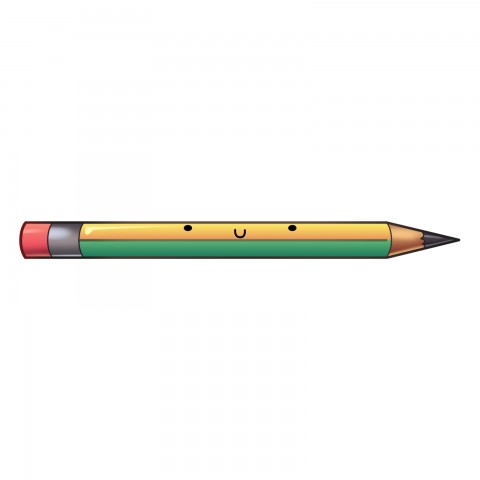
Do you think first impressions matter? I think they definitely do! Never underestimate the power of a friendly hello and a sincere goodbye!
In one of our previous articles, we covered different ways of saying hello in Turkish. Now, let’s move forward and discuss how to give the perfect Turkish goodbye in any situation. Like in any other language, there are numerous ways to say goodbye in Turkish, and the one you use depends on the context.
In this article, we’ll teach you many different ways to say goodbye in Turkish so you can leave a good impression. We’ll start with the most common ones! Start with a bonus, and download the Must-Know Beginner Vocabulary PDF for FREE!(Logged-In Member Only)
 Table of Contents
Table of Contents
- The Most Common Ways of Saying Goodbye in Turkish
- More Specific Ways to Say Goodbye
- Gestures Used to Say Goodbye in Turkey
- Practice Your Turkish Language Goodbyes with TurkishClass101!
1. The Most Common Ways of Saying Goodbye in Turkish

In Turkish, there are both formal and informal ways of saying goodbye. In the following sections, we’ll show you the most common ones in each category so you can be sure you’re using the best Turkish word for goodbye in any situation!
A- Informal
You can use the following Turkish goodbye phrases with friends, family, and other people you’re close to.
| Turkish | English | Tips |
| Baybay. | “Bye-bye.” | This is the easiest one, and it can save you in a pinch if you forget the other ones. |
| Bay. | “Bye.” | This is usually used among teenagers. |
| Hoşçakal. | “Goodbye.” | Literally, it means “Stay pleasantly.” |
| Görüşürüz. | “See you.” | Literally, it means “We see each other.” |
| Sonra görüşürüz. | “See you later.” | Literally, it means “We see each other later.” |
| Kendine iyi bak. | “Take care.” | The exact meaning is “Take care of yourself.” |
B- Formal
You can use these expressions when saying goodbye to older people or people you don’t know very well.
| Turkish | English | Tips |
| Hoşçakalın. | “Goodbye.” | Literally, it means “Stay pleasantly.” |
| Görüşmek üzere. | “See you.” | Literally, it means “Hope to see you.” |
| Tekrar görüşmek üzere. | “See you again.” | Literally, it means “Hope to see you again.” |
| Kendinize iyi bakın. | “Take care.” | Literally, it means “Take care of yourself.” |
2. More Specific Ways to Say Goodbye
Now, let’s look at how to say goodbye in Turkish when a generic phrase just won’t do.
A- Bye until ___. / See you ___.
Here are some useful phrases to use when you know you’ll be seeing the person again:
| Turkish (Informal) | Turkish (Formal) | English |
| Şimdilik hoşçakal. | Şimdilik hoşçakalın. | “Bye for now.” |
| Perşembe görüşürüz. | Perşembe görüşmek üzere. | “See you on Thursday.” |
| Haftaya görüşmek üzere. | Haftaya görüşmek üzere. | “See you next week.” |
| Salıya dek hoşçakal. | Salıya dek hoşçakalın. | “Bye until Tuesday.” |
| Cumaya kadar hoşçakal. | Cumaya kadar hoşçakalın. | “Bye until Friday.” |
B- When someone is traveling

When you’re seeing someone off, it’s always nice to wish them well during their travels.
| Turkish (Informal) | Turkish (Formal) | English |
| İyi yolculuklar. | İyi yolculuklar. | “Have a good trip.” |
| Güle güle git, güle güle gel. | Güle güle gidin, güle güle gelin. | The literal translation is “Go by laughing, come by laughing.” |
| Yolun açık olsun. | Yolunuz açık olsun. | “May your way be open.” |
| Allah’a emanet ol. | Allah’a emanet olun. | “May Allah be with you.” |
C- Saying goodbye on the phone
When you’re ending a phone call, you can use any of these phrases to say goodbye, regardless of how formal or informal the situation is:
- İyi günler. (“Have a good day.” / Literally: “Good days”)
- İyi akşamlar. (“Have a good evening.” / Literally: “Good evenings”)
- İyi geceler. (“Goodnight.” / Literally: “Good nights”)
Keep in mind that these phrases aren’t limited to phone calls; you can also use them when saying goodbye in other situations.
And here are two phrases you can only use in informal situations:
- Öptüm. (“I kissed you.”)
- Öpüyorum. (“I kiss you.”)
D- Saying goodbye forever
If you’re saying goodbye to someone you may never see again, there are a few ways you can wish them well for the last time:
- Elveda. (“Farewell.”)
- Yolun açık olsun. (“May your way be open.”)
- Allah’a emanet ol. (“May Allah be with you.”)
E- When you have to leave
If you have to head off somewhere, but someone else is staying behind, you can use this phrase:
- Allahaısmarladık. (“Bye-bye.” / Literally: “Entrust you to God.”)
If you’ve been invited to someone’s home and it’s time to leave, you can say goodbye with one of these phrases:
- Bize de bekleriz. (“Visit us, too.” / Literally: “We wait for you to our place as well.”)
- Bize de buyrun. (“Visit us, too.” / Literally: “We wait for you to our place as well.”)
F- When someone else is leaving
If you’re seeing someone off, you can say:
- Güle güle. (“Goodbye.”)
If someone has visited you at your house, and they need to leave now, you can say:
- Yine bekleriz. (“Come again.” / Literally: “We wait for you again.”)
G- Other situations
When someone is going on vacation or leaving for a holiday, you can say:
- İyi tatiller. (“Have a good vacation.”)
When someone is going to a social event such as a party, a concert, or a movie, you can say:
- İyi eğlenceler. (“Have fun.”)
When you, or the person you’re talking to, is going to bed, you can say:
- İyi geceler. (“Goodnight.” / Literally: “good nights”)
- İyi uykular. (“Sleep well.” / Literally: “good sleeps”)
- Allah rahatlık versin. (“Goodnight.” / Literally: “May Allah give you comfort.”)

When saying goodbye in the Turkish language, don’t forget to throw in some slang if you’re with friends!
- Kaçmam lazım. (“I have to run.” / Literally: “I have to escape.”)
- Ben çıktım. (“I’m leaving.” / Literally: “I’m out.”)
- Ben gittim. (“I’m gone.” / Literally: “I went.”)
We covered a lot of words and phrases! To hear and practice their pronunciation, please refer to the audio recordings in our “Goodbye in Turkish” vocabulary list.
3. Gestures Used to Say Goodbye in Turkey
In most cultures, people have certain gestures they use when saying goodbye, and Turkey is no different!
There are many gestures that you’re likely familiar with already:
- Waving to a friend or family member
- Blowing a kiss to someone you’re close to
- Giving someone you’re close to a kiss on the cheek or a hug
- Shaking hands with people you don’t know well

But there are quite a few gestures that are unique to Turkey!
For example, in Turkish culture, it’s completely normal for men to kiss each other on the cheeks when greeting or saying goodbye. To better illustrate why this is so important, let me share one of my memories with you:
I was living in the U.S., and my parents came to visit me. I had a Turkish friend whose husband was American, and my parents and I got together with them many times. After a while, my dad kissed this gentleman on the cheeks when seeing them off, thinking that they were becoming friends. Guess what? The next day, my friend’s husband kindly asked me to tell my dad not to kiss him again. Although he was familiar with Turkish culture, this parting gesture was very bothersome for him. Of course, we respected his opinion and my dad shook hands with him from then on. If you experience something similar while in Turkey, don’t be surprised!
Another gesture that’s common in Turkey, but not in the U.S., is to kiss someone’s hand and then put that person’s hand on your own forehead. This is done as a symbol of respect when you’re saying hello or goodbye to older people. Some people might prefer not to kiss the hand, and will instead put the hand on their chin and then on their forehead.

4. Practice Your Turkish Language Goodbyes with TurkishClass101!
After reading all of this information on how to say goodbye in Turkish, will you be able to say “goodbye” to me once you reach the end of this article? (I’m sure you can do it!)
If you think you still need to practice your goodbyes, though, you can explore TurkishClass101.com for relevant lessons and materials. And don’t forget our premium MyTeacher program, which allows you to practice one-on-one with a private teacher.
Is that all? Of course not! TurkishClass101 also has tons of vocabulary lists and other free resources (like this Turkish-English dictionary) to help you get a better grasp of Turkish.
And better still, you can download the app for free and use it wherever you are.
Last but not least, please continue to provide us with feedback about all of the resources provided at TurkishClass101.com!
Hoşçakalın, görüşmek üzere…

Is Turkish Hard to Learn?

Any time we set out to learn something new—whether it be cooking, sewing, ballet, or biology—it intimidates us. Not knowing what we’ll face makes us worry. Furthermore, we question our ability to learn that specific thing because we’ve never done it before. These same concerns pop up when someone starts learning another language.
But is Turkish hard to learn? Or is it easier than you think?
The answer is simple: It might be different from the languages you know and speak, but it’s not difficult.

Yes, it will take some time and effort to learn Turkish, but as we all know, nobody becomes an expert right away.
In this article, we’ll show you the easy parts of Turkish and help you understand the more challenging parts. This way, you’ll know what areas to really focus on when studying. TurkishClass101 will help you eliminate any prejudice you may have about the Turkish language and answer the question “How easy is Turkish to learn?”
Now, let’s start by talking about the easy features of Turkish.
 Table of Contents
Table of Contents
- What Makes Turkish Easy to Learn?
- So What Makes Turkish Hard to Learn?
- How to Start Learning Turkish
- TurkishClass101 is Awesome for Learning Turkish!
- Utilize TurkishClass101 to Learn Turkish Today!
1. What Makes Turkish Easy to Learn?
Turkish uses the Latin alphabet, which gives most learners an advantage because more than 6000 languages worldwide use the Latin-based alphabet. There might be additional letters (or even missing letters) compared to other Latin-based languages, but still, it’s not like you’ll need to rediscover America! You’ll just need to learn how the letters sound.
Great news for those who aren’t familiar with genders or gender-related conjugations: Turkish doesn’t have any grammatical gender. That’s one less thing to worry about!
Can you guess what else you won’t have to worry about? The article “the” doesn’t exist in Turkish. This means you don’t have to do anything special for nouns that function as subjects in a sentence. However, if a sentence has a noun that functions as an object, it will require a suffix:
- “The notebook is in my bag.” (Defter çantamın içinde.)
“Notebook” is used without an article in Turkish.
- “I put the notebook in my bag.” (Defteri çantamın içine koydum.)
Here, “notebook” takes the suffix “i” in Turkish to indicate the article “the,” which is not a separate word in Turkish.
Let’s continue with another convenience. There are no accents in Turkish as there are in some languages (like French), so you won’t have to constantly ask yourself whether the accent is to the left or to the right! We only use the circumflex for loanwords, which is not a big deal!
The convenience doesn’t end there: Turkish also has a flexible word order. Turkish does use the SOV (Subject-Object-Verb) order, which is different from English, but you don’t need to use this order all the time. For example, you can put an object or a verb at the beginning of a sentence without changing its meaning; you’ll only be changing which word is emphasized. Therefore, changing the word order a little bit isn’t usually a problem. However, you have to place the suffixes correctly when you change the order of the words.
Here are some pairs of sentences which are all correct despite having a different word order.
- Ne yapacaksın bugün? – “What will you do today?”
- Bugün ne yapacaksın? – “What will you do today?”
- Buraya gel! – “Come here!”
- Gel buraya! – “Come here!”
- Bugün çok yorgunum. – “I’m very tired today.”
- Çok yorgunum bugün. – “I’m very tired today.”
2. So What Makes Turkish Hard to Learn?
Whenever a student asks me why Turkish is hard to learn, I always tell them that the question needs to be rephrased: “Is Turkish hard to learn?” I try to break the prejudices first. Then, I answer by letting them know that while there will be challenges, the language itself is not hard.
That said, let’s look at some characteristics that make Turkish difficult to learn for foreigners.
Suffixes and vowel harmony
Suffixes are one of the most challenging aspects of the language for new Turkish-learners, because these suffixes don’t exist in most other languages.
Suffixes are added;
- based on the person/subject that a verb alludes to.
- if the subject is plural.
- when definite nouns or pronouns are used as an object. Then, they take the “-ı, -i, -u, -ü” suffixes based on the vowel harmony rules.
- when using possessive pronouns, because there aren’t separate words for them in Turkish. However, the “-m, -ım, -im, -um,-üm” suffixes (in conjugated forms) come after the pronoun to make it possessive.
- based on the tenses.
- when negativity is used.
- when interrogative particles are used.
Once you learn when to use suffixes, the rules for their application, and the vowel harmony, it won’t seem nearly as difficult as it does now.
The pronunciation of letters that don’t exist in English
There are six letters in the Turkish alphabet that don’t exist in English: -ç, -ğ, -ı, -ö, -ş, -ü.

The letter ç, which is the “ch” sound in English (as in “challenge” or “chair”), and the letter ş, which is the “sh” sound in English (as in “shell” or “shame”) are usually pronounced correctly. However, new learners often struggle with the other four.
- ğ is pronounced like the “ou” syllable in the words “ounce” and “our.”
- ı is pronounced like the second “o” in the word “color.”
- ö is pronounced like the “u” in the word “turn.”
- ü is pronounced like the “u” in the word “pure.”
Practicing the pronunciation of words that contain these letters will help you overcome any initial difficulties you might have with them.
Conjugation
Conjugation can make Turkish difficult when you first start studying the language. However, as you learn the rules and practice, you’ll be much less intimidated by it.
You need to know the factors that affect verb conjugation in Turkish, which are:
- Person / Subject
- Number of subject (singular or plural)
- Politeness level
- Tense
You should also note that there are passive voice, causative verbs (verbs formed by adding the causative suffix after the verb root), reflexive verbs, and a verb of mutual action in addition to verb conjugation.
3. How to Start Learning Turkish
Have you decided Turkish isn’t so bad after all? Here are some tips from TurkishClass101.com on how to get started with your Turkish studies!
Alphabet
I’d recommend starting with the alphabet. As I mentioned earlier, not only do some of the letters look different, but they’re also pronounced differently. Make sure to learn how the consonants and vowels sound. Then, additional effort may be required to learn how the letters that don’t exist in your mother tongue are pronounced.
Vocabulary
Learning vocabulary is also essential. You need to start building up your vocabulary (nouns, adjectives, verbs), so once you start learning basic grammar, you can start applying the vocabulary you’ve learned.

You can expand your vocabulary by reading and listening. Make sure to write down the words you don’t know, and always use a dictionary. You can also make flashcards to help you remember words and their meanings. Remember that you need to repeat and use a word many times to memorize it.
Basic Grammar
Once that’s out of the way, start learning basic grammar so you can start making sentences. It might be a good idea to start with pronouns, then word order, sentence structure, and conjugation.
Practice
Finally, you need to put together all you’ve learned and put it to practice. I put “practice” at the end, but that doesn’t mean you have to learn everything before you start practicing. You have to practice as you go, and don’t shy away from making mistakes. On the contrary, be bold and use every opportunity to use the new things you’ve learned:
- You should listen to Turkish radio channels and Turkish music. This will help expand your vocabulary, improve your pronunciation, and give you better overall language comprehension.
- You should read Turkish blogs, articles, and books. This will expand your vocabulary even further and improve your comprehension.
- You should watch Turkish TV shows or videos to improve your vocabulary, pronunciation, and language comprehension.
- Try practicing with native Turkish-speakers whenever possible, as they can help point out and correct your mistakes. This will definitely boost your speaking ability!
4. TurkishClass101 is Awesome for Learning Turkish!
Would you like to learn and practice Turkish in the quickest, easiest, and most fun way? If yes, all you need to do is visit TurkishClass101.com.

Here are some fantastic benefits you can expect when you sign up:
All-in-one resource
Our website teaches you everything you need to know about Turkish and gives you endless opportunities to practice. It teaches you grammar, vocabulary, and pronunciation, and helps you build your listening, writing, reading, and speaking skills. We even teach you about the country’s culture!
Free resources
TurkishClass101.com has many free resources you can use.
Here, you can learn the Turkish language basics, practice your Turkish pronunciation, and study the entire Turkish alphabet. Furthermore, you can learn about Turkish grammar, memorize the 100 Most Common Words, and master a few Key Turkish Phrases.
To learn more vocabulary, you get free access to our themed vocabulary lists, receive a word of the day, and can utilize our Turkish-English dictionary.
Premium services
There’s also MyTeacher, a Premium PLUS service of TurkishClass101 that you can use to practice with a private teacher.
This service provides:
- One-on-one interaction with your personal teacher
- Guidance and ongoing assessment
- Weekly assignments
- Constructive feedback
- Badges for the assignments you complete
Mobility when learning
Don’t fall behind! Keep learning Turkish wherever you are, and never let you location be a barrier in your language-learning.
How? Download the app for free and use it anywhere, anytime.

5. Utilize TurkishClass101 to Learn Turkish Today!
Now you know the easiest and the most challenging parts of learning Turkish! We’ve given you advice on where to start and how to facilitate your learning with TurkishClass101.
Don’t lose any time; check out TurkishClass101 and utilize all of the resources mentioned above. Also, make sure to provide us with feedback about your experience with TurkishClass101!
Before you go, we’re curious: Do you find the Turkish language easy or hard so far? Let us know in the comments, and feel free to ask any questions you still have!

Common Mistakes in Learning Turkish

Making mistakes while learning a language is inevitable. Every language has its own unique linguistic features such as phonology, grammar, and vocabulary to take into account. In addition, the habit of comparing the new language to one’s mother tongue can impact one’s use of the new language and lead to mistakes.

In this article, we’ll talk about the most common Turkish mistakes that learners make when speaking, writing, and listening! We’ll cover a range of common Turkish grammar mistakes and mistakes in pronunciation and spelling, so that you can better avoid them.
Let’s get started.
 Table of Contents
Table of Contents
- Pronunciation Mistakes
- Word Order Mistakes
- Grammar Mistakes
- Other Common Mistakes
- How to Avoid Making Mistakes in Turkish
- Avoid Mistakes in Turkish with the Help of TurkishClass101
1. Pronunciation Mistakes
In Turkish, words are read the way they’re written and written the way they’re read. However, there are a lot of words that come from other languages, and in most cases, their pronunciation is different from the Turkish words’ pronunciation.
We can categorize the most common pronunciation mistakes for Turkish learners as follows:
1. Mispronunciation of the letters that don’t exist in English
2. Mispronunciation of words with a circumflex
3. Tones and intonation

A- Mispronunciation of the letters that don’t exist in English
As you’ll recall, the Turkish alphabet consists of 29 letters, six of which don’t exist in English:
- -ç
- -ğ
- -ı
- -ö
- -ş
- -ü
The letter ç, which is the “ch” sound in the English words “chin” or “chimney,” and the letter ş, which is the “sh” sound in the English words “shock” or “shout,” are usually pronounced correctly. However, the other four are troublesome, for sure.
Turkish learners usually have a tendency to:
- Pronounce ğ like a “g”
However, it’s supposed to be pronounced like the “ou” syllable in the words “ouch” or “out.” Actually, it just elongates the preceding vowel.
It should be noted that no words in Turkish start with a ğ. Take, for example: ağ (“network”), yağmur (“rain”).
- Pronounce ı like an “i”
It should be pronounced like the second “o” in the word “color,” or like the “e” in the word “cooker.” Remember that when you pronounce this letter like an “i,” it will impact the meaning of the word. For example:
– Ilım (“Moderation”)
– İlim (“Science”)
- Pronounce ö like an “o”
It should be pronounced like the “i” in the word “bird,” or like the “u” in the word “curtain.” When you pronounce this letter like an “o,” it will impact the meaning of the word. For example:
– Ön (“Front”)
– On (“Ten”)
- Pronounce ü like a “u”
It should be pronounced like the “u” in the words “pure” and “mute.” When you pronounce this letter like a “u,” it will change the meaning of the word. For example:
– Üç (“Three”)
– Uç (“Edge”)
B- Mispronunciation of words with a circumflex
The circumflex is a diacritic sign written above a letter that affects the pronunciation of a word. It’s used in loanwords.
A letter with a circumflex above it is pronounced differently than the same letter without a circumflex. It implies a longer pronunciation of the letter or the palletization of the consonant that comes before it.
Mispronouncing words with a circumflex is one of the most common pronunciation mistakes for Turkish learners.
Here are some words that contain a circumflex and what they mean if they’re pronounced incorrectly:
- “Hâlâ” is an Arabic word that means “still” or “yet.” The circumflex here makes the “a” longer and performs the palletization of the letter “l.” Pronouncing the word without the circumflex would make it sound like the word hala, which is a Turkish word meaning “sister of father.” Although they’re spelled the same way except for the circumflex, they’re pronounced differently.
- “Kâr” is a Persian word that means “profit.” The circumflex performs the same actions as in the previous word. Pronouncing this word without the circumflex would make it sound like the word kar, which means “snow.” Even though they’re spelled the same way except for the circumflex, they’re pronounced differently.
- “Âmâ” is an Arabic word that means “blind.” The circumflex here makes both the first and last “a” longer. Pronouncing this word without the circumflex would make it sound like the word ama, which means “but.” As seen in the example, although they’re spelled the same way except for the circumflex, these two words are pronounced differently.
C- Tones and intonation
Tones are used to express certain feelings, such as excitement, fear, anger, and hope. Depending on the emotion we want to express, we pronounce the letters or words in a hard, soft, short, or long way, or with a low or high pitch.
Intonation puts an emphasis on the syllables or words that we want to highlight.
How a person uses tones and intonation is likely to be influenced by that speaker’s mother tongue.
Foreigners usually…
- …put an emphasis on the last letter of one-syllable words. However, there’s no intonation on one-syllable words in Turkish.
- …don’t use intonation on the last syllable if the word consists of multiple syllables. However, the intonation is usually on the last syllable if the word is made up of multiple syllables, except for two-syllable names of places and intensive adjectives, such as: İzmir [name of a city in Turkey] and Kapkara [“Coal-black”] where the intonation is on the first syllable.
- …get confused when a word gets a suffix. In Turkish, a suffix gets the intonation of the last syllable.
When it comes to sentences, you need to keep in mind that:
- In simple sentences, verbs are stressed. (Ex: Ben geliyorum. – “I’m coming.”)
- In more complex sentences, the word that’s before the verb is usually stressed. (Ex: İşten şimdi geldim. – “I just came from work.”)
Here are some other tips for you:
- In Turkish, in order to emphasize a word, you can change the place of an object with a subject (or vice-versa).
- As you’ll recall, the suffixes that verbs take imply the personal pronoun already, so you don’t have to use them in sentences unless you want to emphasize the pronoun.
- You can also elongate a certain word in a sentence to stress it.
2. Word Order Mistakes
When learning Turkish, foreigners whose mother tongue uses the SVO (Subject-Verb-Object) word order usually put the verb after the subject in Turkish. However, the typical Turkish word order is SOV (Subject-Object-Verb), which means that the subject precedes the object, and the object precedes the verb. Furthermore, suffixes will always be at the end, agglutinated to the words.
To avoid this kind of error in Turkish, you also need to keep the following in mind:
- Turkish personal pronouns are usually omitted since the suffix of a verb implies the pronoun already.
- Some of the time-related words become adverbs of time when grouped together with other words. These adverbs are located at the beginning of a sentence unless a subject is used in that sentence. (Ex: Sabaha kadar dans ettik. – “We danced until the morning.”)
Turkish word order is more flexible than that of English! For example, you can put an object or a verb at the beginning of a sentence in Turkish. It won’t change the meaning, but the word you’re stressing will definitely change. You can use this flexibility once you’re more comfortable with Turkish, but not in the early stages of your learning.
3. Grammar Mistakes
Common Turkish grammar mistakes tend to fall under these categories:
- Suffixes
- Tenses
- Conjugation
A- Suffixes
Suffixes are one of the most problematic topics for Turkish learners, since they don’t exist in most other languages. Knowing which suffix to use is not sufficient if you want to use it correctly. You also have to know the vowel harmony rules to choose the right vowels in the suffixes.
The most common mistakes in learning Turkish suffixes are made…
- …when adding a suffix to a verb based on the person/subject it alludes to.
- …when determining the suffix required for a singular vs. plural subject.
- …when using the definite article “the” (because there isn’t a separate word for it in the Turkish language). When definite nouns or pronouns are used as an object, they take the “-ı, -i, -u, -ü” suffixes based on the vowel harmony rules.
- …when using possessive pronouns (because there aren’t separate words for them in Turkish). However, the “-m, -ım, -im, -um,-üm” suffixes (in conjugated forms) come after the pronoun to make it possessive.
Turkish learners find it even more complicated to make a negative or interrogative sentence. Here are some common Turkish mistakes in these areas:
| Incorrect usage | Correct usage | What it means in English |
| İyiyim değil. | İyi değilim. | “I’m not well.” |
| Yok değil. | Var. | “There is/are.” |
| Geliyor değilim. | Gelmiyorum. | “I’m not coming.” |
| Gidiyorsun mu? | Gidiyor musun? | “Are you going?” |
B- Tenses
Foreigners learning Turkish also find tenses very confusing. This is because verbs get:
- suffixes according to the tense
- suffixes based on the plural subject
- suffixes according to the personal pronoun
- sometimes buffers
When negativity or interrogation is added, it gets even more complicated. Forming a negative sentence requires that another suffix is added to the verb. To make a question, interrogative particles get personal suffixes and are written separately.
There’s one more thing concerning tenses that really trips learners up: the “reported past tense,” which doesn’t exist in most other languages.
Reported past tense is used for past events that we haven’t witnessed ourselves, but heard about from someone else. It’s also used when we’re not completely sure whether a specific event has taken place or not. Here are a couple of examples:
- Babam iki kez ABD’ye gitmiş. (“My father has gone to the USA twice.”)
- Ödevlerini yapmamışlar. (“They haven’t done their homework.”)
Unfortunately, most foreigners refuse to use this tense because it doesn’t make much sense to them. They insist on using the definite past tense instead of this tense, even if they haven’t witnessed what they’re talking about.
C- Conjugation
The factors that affect verb conjugation in Turkish are:
- Person/subject
- Number
- Politeness level
- Tense
We’ve covered all of these factors above, except for the politeness level. In Turkish, we use the plural “you” both as it’s used in English, and also as a formal way of addressing someone. The polite “you” follows the same rules as the plural “you” in Turkish.
Most foreigners tend not to use the polite “you.”

Keep in mind that, in addition to verb conjugation, there are also passive voice, causative verbs (verbs formed by adding the causative suffix after the verb root), reflexive verbs, and verbs of mutual action.
Let’s see some examples of them:
| Correct usage | Incorrect usage | What it means in English | Note |
| Yerilmek | Yerelmek | “To be criticized” | This is an example of passive voice. Foreigners usually conjugate the word yermek (“to criticize”) incorrectly. |
| Çıkarmak (yukarı) | Çıktırmak | “To make someone go up” | This is a causative case. Foreigners usually conjugate the word çıkmak (“to go up,” “to climb”) incorrectly. |
| Yormak | Yordurmak | “To make someone tired” | |
| Göstermek | Gördürmek | “To show” | This is an irregular causative case where the word görmek (“to see”) is conjugated. |
| Birbirine vermek | Verişmek | “To give each other” | There aren’t any verbs of mutual action for the verb vermek (“to give”). However, foreigners have a tendency to conjugate it, which is not correct. |
4. Other Common Mistakes
Here are a few more common Turkish mistakes that learners tend to make!
A- More pronunciation mistakes
The “h” sound can lead to pronunciation problems, because “h” in the middle or at the end of a word is pronounced in Turkish (unlike in English). For example, Mehmet, which is a name, is pronounced as “Mehhh-met,” not “Me-met.”
Also remember that the Turkish “c” is pronounced as “j” or “g” in English. It’s not pronounced like the “c” in “cereal.” For example, Can, which is a name, is pronounced as “John.”
B- Words that need to be written separately
Interrogative particles, which are used to form “yes-or-no” questions, are written separately in Turkish even though they don’t mean anything when used alone. Even native speakers sometimes make this mistake in Turkish!
C- The words de and da, which mean “also,” need to be written separately as well. De and da are also used as the prepositions “at” and “in,” in which case, they’re supposed to be written together with the word. The suffixes -de and -da are often confused with the words de and da.
Here are some examples:
- Bu gece annemde kalacağım. (“I am going to stay at my mom’s tonight.”)
- Bu gece annem de kalacak. (“My mother will also stay tonight.”)
- Kitabın benim çantamda. (“Your book is in my bag.”)
- Telefonun da benim çantamda. (“Your phone is also in my bag.”)

D- Words even Turkish people pronounce incorrectly
Here are some words that even Turkish people can’t pronounce correctly!
| Correct pronunciation | Meaning of the word | Incorrect pronunciation |
| Aferin | “Good job,” “Well done” | Aferim |
| Arabesk | “Arabesque” | Arabeks |
| Bağırsak | “Intestine” | Barsak |
| Bıçak | “Knife” | Pıçak |
| Ekşi | “Sour” | Eşki |
| Herkes | “Everybody” | Herkez |
| İddia | “Bet” | İddaa |
| Kibrit | “Match” | Kirbit |
| Pasaj | “Passage” | Paşaz |
| Sürpriz | “Surprise” | Süpriz |
| Şarj | “Charge” | Şarz |
| Şemsiye | “Umbrella” | Şemşiye |
| Tuvalet | “Toilet” | Tualet |
| Yalnız | “Alone” | Yanlız |
| Yanlış | “Wrong” | Yalnış |
5. How to Avoid Making Mistakes in Turkish
Wondering how you can avoid making an embarrassing mistake in Turkish? Here are a few pointers!
1. Forget about your native language.
Your mother tongue will have an impact on your Turkish, from grammar habits to phonology. Therefore, you need to put your native language on the shelf for a while. Otherwise, your habits of using your own language will lead to mistakes in Turkish. After a while, you’ll be able to handle both languages separately, but until then, you should forget about your native language.
2. Don’t be afraid of making mistakes.
Every one of us makes mistakes in different areas of life. Those mistakes help us learn not to make more mistakes. There’s an anonymous quote that I saw on the internet. I liked it a lot and wanted to share with you: “A mistake should be your teacher, not your attacker. A mistake is a lesson, not a loss. It is a temporary, necessary detour, not a dead end.”
Remember this quote and don’t be afraid of speaking Turkish. No one will judge you if you make mistakes. On the contrary, they’ll appreciate your courage. Even if you make mistakes in Turkish, those mistakes will help you avoid making more mistakes in the future.

3. Use every opportunity to speak with native Turkish speakers.
There’s always a lot to learn from native speakers, so you should try practicing with Turkish people whenever possible. This way, you can also learn idioms and slang! Native speakers can also show you your mistakes and tell you how to correct them.
4. Be determined.
Don’t let the mistakes you make discourage you. Learning a new language isn’t easy. It requires time. The beginning stages can be tough. But if you don’t give up, you’ll see that it’s possible to learn the language and use it well!
6. Avoid Mistakes in Turkish with the Help of TurkishClass101
After learning about all of these common Turkish mistakes, do you still feel that Turkish is difficult? I don’t think so. I’m sure that these tips will help you stay away from those mistakes, and that as you make fewer mistakes, you’ll get the prejudice that it’s difficult out of your mind.
Visit TurkishClass101.com and check out our numerous audio recordings, themed vocabulary lists, and free resources (including a handy dictionary you can refer to), in order to get a better grasp of Turkish.
Don’t forget that there’s also MyTeacher, a Premium service of TurkishClass101 that you can use to practice with a private teacher.
What’s more? You can download the app for free and use it wherever you are!
Last but not least, please continue to provide us with feedback about all the resources provided at TurkishClass101.
Before you go, let us know in the comments which Turkish mistakes you struggle with the most!

Using Turkish Questions and Answers is a Piece of Cake Now!

Questions are everywhere! We ask questions when shopping, when having a conversation with a friend, when we interview someone, and when we’re at school, work, or a restaurant.

Questions become even more critical when you’re in a foreign country. While in Turkey, you might need to ask for the time, or where a certain place is, like a hospital or restroom. You might also find yourself in a position where you need to ask permission to do something.
Knowing how to ask basic questions in the Turkish language, and understanding the Turkish question patterns, is essential if you want your needs fulfilled faster. You should also be able to answer simple questions easily and express yourself in a clear manner.
In this article, you’ll learn the Turkish question words and how to make questions in Turkish. You’ll see that forming questions in Turkish is easier than you thought!
Let’s start with how to say “question” in Turkish:
- Soru (“Question”)
- Cevap / Yanıt (“Answer”)
Keep in mind that there are both “regular” questions that use Turkish question words and yes-no questions in Turkish, like in English. Now, let’s see how these two types of questions in Turkish are used.
 Table of Contents
Table of Contents
- Regular Questions in Turkish
- Yes-No Questions in Turkish
- What Can You Ask?
- Practice Turkish Questions and Answers with TurkishClass101!
1. Regular Questions in Turkish
Regular questions are those we ask using “what,” “when,” “where,” “how,” “why,” and other types of question words.
Below is a table of the Turkish question words that are commonly used:
| # | Turkish | English |
| 1 | Ne? | “What?” |
| 2 | Kim? | “Who?” |
| 3 | Kimi? | “Whom?” |
| 4 | Kime? | “To whom?” |
| 5 | Kimin? | “Whose?” |
| 6 | Hangi? | “Which?” |
| 7 | Hangisi? | “Which one?” |
| 8 | Ne zaman? | “When?” |
| 9 | Nerede? | “Where?” |
| 10 | Nereden? | “From where?” |
| 11 | Nereye? | “To where?” |
| 12 | Ne kadar? | “How much?” / How long?” |
| 13 | Kaç tane? | “How many?” |
| 14 | Nasıl? | “How?” |
| 15 | Niçin? / Neden? | “Why?” |
2. Yes-No Questions in Turkish
Yes-no questions are formed by using interrogative particles (-mı,-mi, -mu, -mü, and their conjugated forms). They’re placed at the end of a sentence right after the verb. Although they don’t mean anything on their own, they’re still used as separate words. Here are a few examples of yes-no Turkish questions:
- Bugün üzgün müsün? (“Are you sad today?”)
- Yarın hastaneye gidecek misin? (“Will you go to the hospital tomorrow?”)
- Okul bugün başladı mı? (“Did school start today?”)
3. What Can You Ask?
Life is full of questions, as we mentioned earlier. Who knows how many questions we ask in a day? Of course, it’s not possible to cover all of the questions in the Turkish language, or any language for that matter.

Below, we’ve categorized the most common Turkish questions and answers, based on the types of situations they’re used in.
Please note that all of the questions and answers covered here use the second singular person (informal “you”).
1. General Information
The chart below will outline what you should know for asking questions in Turkish about more general information.
| # | Question in Turkish | Answer in Turkish | Question in English | Answer in English |
| 1 | Bu ne? / Ne bu? / Bu nedir? / Nedir bu? | Bu bir kamera. | “What is this?” | “This is a camera.” |
| 2 | Bu kim? / Kim bu? | Bu benim kuzenim. | “Who is this?” | “This is my cousin.” |
| 3 | Postane nerede? | Caddenin sonunda. | “Where is the post office?” | “At the end of the street.” |
| 4 | Saat kaç? / Saatin kaç? | Saat beşi on geçiyor. | “What time is it?” | “It’s ten past five.” |
| 5 | Yarın hava nasıl? | Yağmurlu olacak. | “How is the weather tomorrow?” | “It will be rainy.” |
| 6 | Bu havlu kaç para? / Bu havlu ne kadar? | On beş Lira | “How much is this towel?” | “Fifteen Liras.” |
| 7 | İzmir Ankara’dan ne kadar uzakta? | Yaklaşık 600 km. | “How far is İzmir from Ankara?” | “Approximately 600 km.” |
| 8 | Sana yardım edebilir miyim? / Sana yardımcı olabilir miyim? | Evet, lütfen. Hayır, teşekkürler. | “Can I help you?” | “Yes, please.” “No, thanks.” |
| 9 | Bana yardım edebilir misin? / Bana yardımcı olabilir misin? | Tabi. Yok, kusura bakma; gitmem lazım. | “Can you help me?” | “Sure.” “No offense; I have to go.” |
2. Personal Information

The following Turkish questions and answers will help you exchange personal information in Turkey:
| # | Question in Turkish | Answer in Turkish | Question in English | Answer in English |
| 1 | Adın ne? / İsmin ne? | Adım Mary. İsmim Mary. | “What is your name?” | “My name is Mary.” |
| 2 | Kaç yaşındasın? | Otuz yaşındayım. | “How old are you?” | “I’m thirty years old.” |
| 3 | Nerelisin? / Neredensin? | Amerikalıyım. | “Where are you from?” | “I’m from the USA.” |
| 4 | Nerede yaşıyorsun? / Nerede oturuyorsun? | San Diego’da yaşıyorum. San Diego’da oturuyorum. | “Where do you live?” | “I live in San Diego.” |
| 5 | Hobilerin neler? | Seyahat etmek ve yüzmek. Seyahat etmeyi ve yüzmeyi severim. | “What are your hobbies?” | “To travel and to swim.” “I like traveling and swimming.” |
| 6 | Evli misin? | Evet, evliyim. Hayır, değilim. | “Are you married?” | “Yes, I’m married.” “No, I’m not.” |
| 7 | Çocuğun var mı? | Evet, 1 tane var. Hayır, yok. | “Do you have a kid?” | “Yes, I have one.” “No, I don’t.” |
| 8 | Kardeşlerin var mı? | Evet, 3 kardeşim var. Hayır, yok. | “Do you have siblings?” | “Yes, I have three siblings.” “No, I don’t.” |
| 9 | İngilizce biliyor musun? / İngilizce konuşuyor musun? | Evet, biraz. Maalesef hayır. | “Do you speak English?” | “Yes, a little bit.” “Unfortunately, no.” |
3. School-Related Questions

The examples below will guide you in how to ask questions in Turkish about topics related to school.
| # | Question in Turkish | Answer in Turkish | Question in English | Answer in English |
| 1 | Öğrenci misin? | Evet, öğrenciyim. Hayır, değilim. | “Are you a student?” | “Yes, I’m a student.” “No, I’m not.” |
| 2 | Kaçıncı sınıftasın? / Kaçıncı sınıfa gidiyorsun? | 7. sınıftayım. 7. sınıfa gidiyorum. | “What grade are you in?” | “I’m in seventh grade.” |
| 3 | Hangi üniversitede okuyorsun? | San Diego Üniversitesi’nde okuyorum. | “In which university are you studying?” | “I’m studying at the University of San Diego.” |
| 4 | Okulun nerede? | San Diego’da. | “Where is your school?” | “In San Diego.” |
| 5 | En sevdiğin ders ne? | Tarih. | “What is your favorite class?” | “History.” |
| 6 | Ne zaman mezun olacaksın? | 2 yıl sonra. 2 yıl var daha. | “When will you graduate?” | “In two years.” “In more than two years.” |
| 7 | Mezun olunca ne olacaksın? | Arkeolog. | “What will you be when you graduate?” | “An archaeologist.” |
| 8 | Matematiği seviyor musun? | Evet, seviyorum. Hayır, hiç sevmem. | “Do you like math?” | “Yes, I like it.” “No, I don’t like it at all.” |
| 9 | Ödevini yaptın mı? / Ev ödevini yaptın mı? | Evet, yaptım. Hayır, henüz yapmadım. | “Did you do your homework?” | “Yes, I did.” “No, not yet.” |
4. Business-Related Questions

Here are some Turkish questions and answers you can use when carrying out conversations relevant to business:
| # | Question in Turkish | Answer in Turkish | Question in English | Answer in English |
| 1 | Mesleğin ne? | Endüstri mühendisiyim. | “What is your profession?” | “I’m an industrial engineer.” |
| 2 | Ne okudun? | Mühendislik okudum. | “What did you study?” | “I studied engineering.” |
| 3 | Hangi dilleri biliyorsun? / Hangi dilleri konuşuyorsun? | Sadece İngilizce biliyorum. | “Which languages do you speak?” | “I only speak English.” |
| 4 | Hangi üniversitede okudun? | Stanford’da. | “Which university did you graduate from?” | “Stanford.” |
| 5 | Daha önce nerede çalıştın? | Dole’da çalıştım. | “Where did you work before?” | “I worked at Dole.” |
| 6 | ___ olarak ne kadar çalıştın? | ___ olarak 5 yıl çalıştım. | “How long have you worked as a ___?” | “I have worked as a ___ for five years.” |
| 7 | 3 yıl içinde kendini nerede görüyorsun? | 3 yıl içinde kendimi Üretim Departmanının yöneticisi olarak görüyorum. | “Where do you see yourself in three years?” | “I see myself as the manager of the Production Department in three years.” |
| 8 | Özgeçmişin var mı? / CV’in var mı? | Evet, var. Hayır, yok. | “Do you have a CV?” | “Yes, I do.” “No, I don’t.” |
| 9 | ___ konusunda tecrübeli misin? / ___ konusunda deneyimli misin? | Evet, tecrübeliyim. Hayır deneyimli değilim. | “Are you experienced in ___?” | “Yes, I’m experienced.” “No, I’m not experienced.” |
5. What if You Need Clarification or More Explanation?

The following questions in Turkish and their answers can help you get clarity if you didn’t quite understand something you’ve just heard.
| # | Question in Turkish | Answer in Turkish | Question in English | Answer in English |
| 1 | Tekrarlayabilir misin lütfen? | Tabi. Elbette. | “Can you repeat please?” | “Sure.” “Of course.” |
| 2 | Yavaş konuşabilir misin lütfen? | Tabi. Elbette. | “Can you speak slowly please?” | “Sure.” “Of course.” |
| 3 | Tekrar anlatabilir misin lütfen? | Olur. Hayır, anlatamam. | “Can you explain it again please?” | “Alright.” “No, I can’t.” |
| 4 | Benim için yazabilir misin lütfen? | Tabi. Elbette. | “Can you write it down for me please?” | “Sure.” “Of course.” |
| 5 | Pardon? | You can repeat what you said as an answer to this question. | “Excuse me?” | You can repeat what you said as an answer to this question. |
| 6 | Bu gerçek mi? / Gerçek mi bu? | Evet, gerçek. Yok, hayır, şaka. | “Is that true?” | “Yes, it’s true.” “No, it’s not; it’s a joke.” |
| 7 | Bu doğru mu? / Doğru mu bu? | Evet, doğru. Hayır, yanlış. | “Is that correct?” | “Yes, it’s correct.” “No, it’s wrong.” |
| 8 | Bu yanlış mı? / Yanlış mı bu? | Evet, yanlış. Hayır, doğru. | “Is that wrong?” | “Yes, it’s wrong.” “No, it’s correct.” |
| 9 | Türkçe de “___” nasıl dersin? | “Türkçe’de “___” denir. | “How do you say ‘___’ in Turkish?” | “It’s said ‘___’ in Turkish.” |
4. Practice Turkish Questions and Answers with TurkishClass101!
Wow, you’ve really gone over a lot of info today!
We started with how to say “question” in Turkish and then went on to learn the Turkish question words and the most common Turkish questions and answers. But there’s still so much more to learn. To practice, you can visit TurkishClass101.com and take advantage of our numerous audio recordings, vocabulary lists, dictionary entries, and other free resources.
Don’t forget that you can also use MyTeacher, a Premium service of TurkishClass101 that allows you to practice with a private teacher.
What’s more? You can download the app for free and use it wherever you are.
As usual, we’d be happy to hear your feedback about your experience with the services offered at TurkishClass101! And don’t hesitate to reach out in the comments section with any questions you have about today’s lesson.
Happy learning!

Practicality vs. Theory – Useful Turkish Sentence Patterns

Grammar is definitely a must when you want to learn a language properly. However, it takes some time to have good command of this crucial factor. Unfortunately, life doesn’t wait for anyone. You might be in a foreign country now, and need to ask for directions or the time—you might even need to know where the closest hospital is.
Theory doesn’t help much when you need to communicate effectively. This is where practicality kicks in. And by “practicality,” I mean certain patterns you can use in daily conversations.
In this article, we’ll show you ten different Turkish sentence patterns. We’ll start with an easy Turkish sentence pattern and move on to more complex ones. Most of the sentences that you’ll hear, write, or speak will follow these basic sentence patterns. Until you have a good grasp of grammar, the examples provided here will help you understand the basic Turkish sentence structure and sentence patterns.

They’ll not only help you express yourself better and fulfill your needs more quickly in daily life, but they’ll also enable you to speak Turkish sooner and serve as a foundation on which you can build your grammar knowledge.
Let’s get started with some Turkish sentence examples.
 Table of Contents
Table of Contents
- Sentences Linking Two Nouns
- Describing Things
- Possession and Ownership
- Expressing “Want”
- Expressing Needs
- Expressing Obligations
- Likes and Dislikes
- How to Request Something
- Asking for Permission
- Question Patterns
- More Practice with TurkishClass101.com
1. Sentences Linking Two Nouns

This is an easy Turkish sentence pattern, where two nouns are linked to each other.
| Turkish | English | |
| 1 | Dan benim erkek arkadaşım(dır). | “Dan is my boyfriend.” |
| 2 | Mary İngilizce öğretmeni(dir). | “Mary is an English teacher.” |
| 3 | Şu büyük ev arkadaşımın eviydi. | “That big house was my friend’s house.” |
| 4 | Bu kitap babamın doğum günü hediyesiydi. | “This book was my father’s birthday gift.” |
| 5 | Ablamın en sevdiği oyuncağı bu bebek(tir). | “My elder sister’s favorite toy is this doll.” |
Please note that the third person singular pronoun doesn’t have to take the “to be” suffix; you can leave it blank. That’s why I’ve put the suffix in parentheses. You’ll encounter some more of these throughout the article.
Let’s see how you can make variations of this Turkish sentence pattern:
In all of the sentences, you can replace the subject with anything you want. For example: annem (“my mother”); bu araba (“this car”); şu kısa boylu çocuk (“that short child”).
1. In this example, erkek arkadaşım (“my boyfriend”) can be replaced with: öğretmenim (“my teacher”); babam (“my father”); ev arkadaşım (“my roommate”).
2. In the second example, İngilizce öğretmeni(dir) can be replaced with any other occupation: mühendistir (“is an engineer”); teknisyendir (“is a technician”); öğrencidir (“is a student”).
2. Describing Things

Describing people, places, things, and so on, is something we do a lot in our daily lives. There’s also an easy Turkish sentence pattern you can use to do this. Here are some examples of how to form Turkish sentences using adjectives.
1- People
Would you like to tell others what you think about the people in your life? Here you are: below are some Turkish sentence patterns you can use:
| Turkish | English | |
| 1 | Kızım çok güzel(dir). | “My daughter is very pretty.” |
| 2 | Mark çok akıllı(dır). | “Mark is very smart.” |
| 3 | Rock Hudson çok yakışıklıydı. | “Rock Hudson was very handsome.” |
| 4 | Sinemada gördüğümüz çift gerçekten çok mutlu(dur). | “The couple we saw at the cinema is really very happy.” |
| 5 | Bana aldığın hediye benim için çok değerli. | “The present you bought me is very precious to me.” |

You can replace the subject with any name or noun, and then you can replace the adjective accordingly.
2- Places
How about describing places in Turkish? You can use the following Turkish sentence patterns when you need to talk to someone about a certain place:
| Turkish | English | |
| 1 | Bu ev çok büyük(tür). | “This house is very big.” |
| 2 | Benim odam çok karanlık(tır). | “My room is very dark.” |
| 3 | Bu cadde çok kalabalık(tır). | “This street is very crowded.” |
| 4 | Bahçemiz muhteşemdi. | “Our garden was gorgeous.” |
| 5 | Sana gösterdiğim bina çok eski(dir). | “The building I showed you is old.” |
3- Things
We use so many different adjectives when talking about objects, food, feelings, etc. These are some examples of the Turkish sentence construction you can use to describe things:
| Turkish | English | |
| 1 | Bu kolye çok uzun. | “This necklace is very long.” |
| 2 | Bu koltuk hiç rahat değil(dir). | “This armchair is not comfortable at all.” |
| 3 | Sınav gerçekten zordu. | “The exam was really hard.” |
| 4 | Tatlı çok lezzetliydi. | “The dessert was delicious.” |
| 5 | Dün aldığın gömlek çok şık. | “The shirt you bought yesterday is very trendy.” |
3. Possession and Ownership
We frequently talk about what we have or what we own. Here are some examples of the Turkish language sentence structures for talking about possession and ownership:
| Turkish | English | |
| 1 | Büyük bir ailem var. | “I have a big family.” |
| 2 | Bir evim ve iki arabam vardı. | “I had a house and two cars.” (“I owned a house and two cars.”) |
| 3 | Hiç vaktim yok. | “I don’t have any time.” |
| 4 | Senin beğendiğin o kitap bende yok. | “I don’t have that book you liked.” |
| 5 | Alışveriş merkezine yürüme mesafesinde bir ofisim var. | “I have an office within walking distance of the shopping center.” |
4. Expressing “Want”
In our daily lives, we often talk about the things we want or the activities we want to do. Following are some Turkish sentence patterns that will help you express what you want (and what you don’t want):
| Turkish | English | |
| 1 | Bir fincan kahve istiyorum. | “I want a cup of coffee.” |
| 2 | Bir soru sormak istiyorum. | “I want to ask a question.” |
| 3 | Şu adrese gitmek istiyorum. | “I want to go to this address.” |
| 4 | Seninle konuşmak istemiyorum. | “I don’t want to talk to you.” |
| 5 | Deniz kenarında bir ev istiyorum. | “I want to have a house by the seaside.” |
| 6 | En yakın hastanenin nerede olduğunu öğrenmek istiyorum. | “I want to know where the closest hospital is.” |

Let’s see how you can make variations of this Turkish sentence pattern:
1. In this example, bir fincan kahve (“a cup of coffee”) can be replaced with: bir dilim ekmek (“a slice of bread”); bir şişe şarap (“a bottle of wine”); bir bardak süt (“a glass of milk”).
2. – 5. The object is placed at the beginning, followed by the infinitive form of the verb that describes the action you want to do, and then the conjugated form of the verb istemek (“to want”).
5. Expressing Needs
Knowing how to express your needs in a foreign language is very important, especially in emergencies.
Here are five Turkish sentence patterns about needs that will be useful in your daily conversations:
| Turkish | English | |
| 1 | Bir kaleme ihtiyacım var. | “I need a pen.” |
| 2 | Bir eczane bulmam lazım. | “I need to find a pharmacy.” |
| 3 | Pratik yapmam gerek. | “I need to practice.” |
| 4 | Burada olmana gerek yok. | “You don’t need to be here.” |
| 5 | Ayılmak için bir fincan kahveye ihtiyacım var. | “I need a cup of coffee to get sober.” |
6. Expressing Obligations
There are many times when we need to tell people what we have to do. Here are some useful Turkish sentences for beginners:
| Turkish | English | |
| 1 | İşe gitmeliyim. | “I must go to work.” |
| 2 | Tuvaleti kullanmak zorundayım. | “I have to use the restroom.” |
| 3 | Hemen bir doktor bulmalıyım. | “I must find a doctor immediately.” |
| 4 | Sigara içmemelisin. | “You mustn’t smoke.” |
| 5 | Toplantının sonuna dek kalmak zorunda değilsin. | “You don’t have to stay until the end of the meeting.” |
7. Likes and Dislikes
There are so many things (or people) that we like or dislike in life. One way or the other, we frequently talk about these likes and dislikes. Now, let’s see which Turkish sentence patterns can help us express these two feelings.

| Turkish | English | |
| 1 | Köpekleri çok severim. | “I like dogs a lot.” |
| 2 | Seni beğeniyorum. | “I like you.” |
| 3 | Türkçe öğrenmeyi seviyorum. | “I like learning Turkish.” |
| 4 | Futbol oynamayı sevmiyorum. | “I don’t like playing soccer.” |
| 5 | Annemin aldığı elbiseyi beğenmedim. | “I didn’t like the dress my mother bought.” |
8. How to Request Something
Another set of Turkish phrases you need to know are those for making requests. These can take the form of sentences or questions.
1- In sentence form
The following example sentences will show you how to word your requests:
| Turkish | English | |
| 1 | Lütfen otur. | “Please sit down.” |
| 2 | Lütfen beni dinle. | “Please listen to me.” |
| 3 | Soruma cevap ver lütfen. | “Answer my question, please.” |
| 4 | Lütfen toplantıya geç kalma. | “Please don’t be late to the meeting.” |
| 5 | Senden sessiz olmanı rica ediyorum. | “I’m requesting you to be quiet.” |
2- As a question
I’m sure these example sentences will give you an idea of how to ask people what you want them to do (or not do).
| Turkish | English | |
| 1 | Ayağa kalkabilir misin lütfen? | “Can you stand up, please?” |
| 2 | Işıkları söndürebilir misin lütfen? | “Can you turn off the lights, please?” |
| 3 | Ödevini yapabilir misin lütfen? | “Can you please do your homework?” |
| 4 | Pencereyi kapatabilir misin lütfen? | “Can you close the window please?” |
| 5 | Rica etsem kapıyı açabilir misin lütfen? | “May I request you to open the door, please?” |
9. Asking for Permission
Here’s how to make Turkish sentences for asking permission:
| Turkish | English | |
| 1 | İçeri girebilir miyim? | “May I come in?” |
| 2 | Bir bardak su alabilir miyim lütfen? | “May I get a glass of water, please?” |
| 3 | Telefon numaranı alabilir miyim? | “May I get your phone number?” |
| 4 | Toplantıya katılabilir miyim? | “May I join the meeting?” |
| 5 | Bir soru sorabilir miyim? | “May I ask a question?” |
10. Question Patterns
Have you ever thought about how many questions you ask a day? I’m pretty sure you haven’t. I haven’t either, but I’m just guessing and the answer is probably “many.” There are “what,” “when,” “where,” “how,” “why,” and other types of questions. In this section, we’ll show you examples of how to form the most commonly used questions.

1- What?
Below are some example questions:
| Turkish | English | |
| 1 | Bu nedir? | “What is this?” |
| 2 | Adın ne? | “What is your name?” |
| 3 | Ne oldu? | “What happened?” |
| 4 | Ne dedin? | “What did you say?” |
| 5 | Dün Türk restoranında sipariş ettiğin içecek neydi? | “What was the drink you ordered at the Turkish restaurant yesterday?” |
2- What Time? / When?
Here are some patterns you can use:
| Turkish | English | |
| 1 | Saat kaç? | “What time is it?” |
| 2 | Saat kaçta geleceksin? | “At what time will you come?” |
| 3 | Toplantı ne zaman? | “When is the meeting?” |
| 4 | Uçak ne zaman kalkacak? | “When will the plane take off?” |
| 5 | Ne zaman gideceksin? | “When will you go?” |
3- Where?
Below are some examples:
| Turkish | English | |
| 1 | Nerelisin? | “Where are you from?” |
| 2 | Tuvalet nerede? | “Where is the restroom?” |
| 3 | Postane nerede? | “Where is the post office?” |
| 4 | Dün işten sonra nereye gittin? | “Where did you go after work yesterday?” |
| 5 | Nerede yemek yemek istersin? | “Where would you like to eat?” |
4- Other Questions
Here are some more examples for other types of questions:
| Turkish | English | |
| 1 | Havaalanına nasıl gidebilirim? | “How can I go to the airport?” |
| 2 | Bu halı kaç para? | “How much is this carpet?” |
| 3 | Neden sordunuz? | “Why did you ask?” |
| 4 | Kaç tane bilet alacaksın? | “How many tickets will you buy?” |
| 5 | Otobüsten hangi durakta inmeliyim? | “At which stop should I get off of the bus?” |
11. More Practice with TurkishClass101.com
How does it feel to know at least ten Turkish sentence patterns? Do you think you’ll be able to express your needs, likes, and dislikes better? Will you be able to ask the most pressing questions? I’m sure you’ll do better than you’ve done in the past!
How about doing even better than today? All you need to do is visit TurkishClass101.com and utilize all of our free resources, including our dictionary!
You can also download the app for free and use it wherever you are.
Don’t forget that there’s also MyTeacher, the premium TurkishClass101 service that you can use to practice the Turkish sentence structure and sentence patterns with a private teacher.
Please don’t neglect to share your experience with us about the services offered at TurkishClass101.com!
Happy learning!

Your Ultimate List of the Most Common Turkish Adverbs

We talk and write to communicate. But does communication only consist of exchanging information? Do the details, precision, and clarity of the information matter? How about sharing ideas or conveying feelings through conversations?
Can a simple sentence with only a subject and a verb—and maybe even an adjective—always lead to clear communication?
Not necessarily! Some of those details, clarity, and feelings are hidden in what we call “adverbs.”
Today we’ll talk about Turkish adverbs; their functionality, types, and placement in sentences. By the time you finish reading this article, you’ll have learned around 100 basic adverbs in Turkish.
 Table of Contents
Table of Contents
- General Info on Adverbs
- Adverbs Based on Their Functions and Meanings
- Adverbs Based on Their Structures
- Where Do Adverbs Go in a Sentence?
- Get More Comfortable with Adverbs via TurkishClass101
1. General Info on Adverbs
Let’s start with the definition of an adverb. An adverb is a word that describes a verb, an adjective, another adverb, a phrase, or a clause. However, it doesn’t modify a noun.
An adverb also gives information about the manner, place, time, frequency, or certainty of the action represented by the verb. To better explain this, I would like to rephrase my question from earlier:
Are nouns, verbs, and adjectives sufficient to form sentences that get all of the feelings, details, and messages across?
For example, if someone said “I walked,” wouldn’t you want to ask where, when, how, or why they walked? Well, yes, for better communication, we need the answers to these kinds of questions. This is what adverbs do.
Now, let’s see what types of adverbs there are in Turkish. Adverbs in Turkish are classified as follows:
- Adverbs based on their functions and meanings
- Adverbs based on their structures
Now, let’s dive a little deeper into this before moving on to our Turkish adverbs list.
2. Adverbs Based on Their Functions and Meanings

The Turkish adverbs that fall under this category are:
- Turkish adverbs of manner
- Turkish adverbs of time
- Turkish adverbs of place/direction
- Turkish adverbs of quantity
- Turkish adverbs of frequency
- Turkish adverbs of interrogation
- Adverbs that indicate manner/situation
Turkish adverbs of manner show how an action is executed. This category has seven sub-categories:
1. Qualitative Adverbs
In Turkish, some adverbs can be formed from adjectives by adding a suffix. Below is a table that shows the rules for determining the correct suffixes:
| Last syllable of the adjective has “a, ı, o, u “ | Last syllable of the adjective has “e, i, ö, ü” | ||||
| Adjective | Adverb | If the adjective ends with “f, s, t, k, ç, ş, h, p” | If the adjective ends with other letters | If the adjective ends with “f, s, t, k, ç, ş, h, p” | If the adjective ends with other letters |
| Yavaş “Slow” | Yavaşça “Slowly” | -ça | |||
| Saygısız “Disrespectful” | Saygısızca “Disrespectfully” | -ca | |||
| Nazik “Kind” | Nazikçe “Kindly” | -çe | |||
| Dikkatli “Careful” | Dikkatlice “Carefully” | -ce | |||
Sometimes the adjective and the adverb can be the same word. For example:
- Hızlı (“Fast” / “Rapidly” / “Speedily”)
Now, it’s time to learn more qualitative adverbs in Turkish:
| No. | Adverbs in Turkish and English | Their Usage |
| 1 | İyi “Well” | Sınava iyi hazırlandım. “I was well-prepared for the exam.” |
| 2 | Doğru “Correctly” | Numarayı doğru yazın lütfen. “Please write the number correctly.” |
| 3 | Kolayca “Easily” | Bu problemi kolayca çözdüm. “I solved this problem easily.” |
| 4 | Sessizce “Quietly” | Bana sessizce yaklaştı. “He/she/it approached me quietly.” |
| 5 | Hafifçe “Lightly” | Omuzuma hafifçe dokundu. “He/she touched my shoulder lightly.” |
| 6 | Gizlice “Secretly” | Hediyeyi gizlice paketledim. “I wrapped the present secretly.” |
| 7 | Basitçe “Simply” | Konuyu basitçe özetledim. “I summarized the issue simply.” |
| 8 | Açıkça “Frankly” / “Openly” / “Clearly” | Fikrimi açıkça söyledim. “I told my opinion frankly.” |
| 9 | Güzelce “Properly” | Ne gördüğünü bana güzelce anlat. “Tell me properly what you saw.” |
| 10 | Kibarca “Politely” | Onu kibarca uyardım. “I warned him/her politely.” |
| 11 | Sakince “Calmly” | Teklifini sakince reddettim. “I refused his/her proposal calmly.” |
| 12 | Rahatça “Comfortably” | Yeni odamda rahatça uyudum. “I slept comfortably in my new room.” |
2. Adverbs of Certainty
Here’s a Turkish adverbs list of certainty:
| No. | Adverbs in Turkish and English | Their Usage |
| 13 | Kesinlikle “Definitely” / “Certainly” | Partiye kesinlikle gelmeyeceğim. “I definitely won’t come to the party.” |
| 14 | Hiç “Never” | Japonya’yı hiç görmedim. “I have never seen Japan.” |
| 15 | Mutlaka “Absolutely” | O oyunu mutlaka görmelisin. “You must absolutely see that play.” |
| 16 | Elbette “For sure” | Elbette geleceğim. “I will come for sure.” |
| 17 | Ne olursa olsun “Regardless” | Hava nasıl olursa olsun gideceğim. “I will go regardless of the weather.” |
| 18 | Kuşkusuz “Doubtlessly” | Kuşkusuz suçlusun. “You are doubtlessly guilty.” |
3. Adverbs of Repetition
Here are some examples of repetitive adverbs in Turkish:
| No. | Adverbs in Turkish and English | Their Usage |
| 19 | Yine “Again” / “Over” / “Once again” | Yine kaybettim. “I lost again.” |
| 20 | Tekrar “Again” / “Repetition” | Adresini tekrar yazmalıyım. “I have to write your address again.” |
| 21 | Bir daha “Once more” / “Once again” | Sana bir daha kanmayacağım. “I will not fall for you once again.” |
| 22 | İkide bir “Again and again” / “Constantly” | İkide bir düşüyorsun. “You are constantly falling.” |
| 23 | Zaman zaman “From time to time” / “Now and then” | Onu zaman zaman arıyorum. “I call him/her from time to time.” |
4. Adverbs of Probability
The table below shows examples of Turkish adverbs of probability.
| No. | Adverbs in Turkish and English | Their Usage |
| 24 | Belki “Maybe” | Belki dönerim. “Maybe I will return.” |
| 25 | Muhtemelen “Probably” | Muhtemelen uyuyordur. “He/she/it is probably sleeping.” |
| 26 | Sanıyorum ki “I guess” | Sanıyorum ki çalışıyordur. “I guess he/she is working.” |
5. Adverbs of Distribution
| No. | Adverbs in Turkish and English | Their Usage |
| 27 | Teker teker “One by one” / “Individually” | Teker teker saymalısın. “You must count one by one.” |
| 28 | Beşer beşer “By fives” | Kutuları beşer beşer dizdim. “I stacked the boxes five by five.” |
6. Adverbs of Restriction
| No. | Adverbs in Turkish and English | Their Usage |
| 29 | Ancak “Merely” / “Solely” / “Only” | Dün ancak bir saat uyuyabildim. “Yesterday, I could only sleep for one hour.” |
| 30 | Artık “No longer” / “Anymore” | O artık gelmez. “He/she/it won’t come anymore.” |
7. Adverbs of Proximity / Approximation
| No. | Adverbs in Turkish and English | Their Usage |
| 31 | Yaklaşık “Approximately” | Dün yaklaşık bir saat çalıştım. “Yesterday, I worked approximately one hour.” |
| 32 | Hemen hemen “Almost” | İşim hemen hemen iki saat önce bitti. “I was done almost two hours ago.” |
| 33 | Aşağı yukarı “More or less” / “Approximately” | Aşağı yukarı beş kilometre yürüdüm. “I walked five kilometers, more or less.” |
| 34 | Neredeyse “Almost” | Neredeyse düşüyordum. “I almost fell.” |
| 35 | Şöyle böyle “So-so” | Sınav şöyle böyle geçti. “The exam went so-so.” |
8. Adverbs that indicate the time of an action
Turkish time adverbs answer the “when” question. Now, are you ready for a list of some Turkish adverbs of time and their usage in sentences?
| No. | Adverbs in Turkish and English | Their Usage |
| 36 | Dün “Yesterday” | Dün okula gitmedim. “I did not go to school yesterday.” |
| 37 | Dün gece “Last night” | Dün gece hiç uyuyamadım. “I could not sleep at all last night.” |
| 38 | Bugün “Today” | Bugün alışverişe gideceğim. “I will go shopping today.” |
| 39 | Bu sabah “This morning” | Bu sabah çok uykum var. “I’m very sleepy this morning.” |
| 40 | Bu gece “Tonight” | Bu gece yemek pişirmeyeceğim. “I will not cook tonight.” |
| 41 | Yarın “Tomorrow” | Yarın hastaneye gideceğim. “I will go to the hospital tomorrow.” |
| 42 | Gelecek hafta “Next week” | Gelecek hafta kızım mezun oluyor. “My daughter is graduating next week.” |
| 43 | Şimdi “Now” | Şimdi sessiz olmalısın. “You have to be quiet now.” |
| 44 | Hemen şimdi “Right now” | Hemen şimdi gitmeliyim. “I have to go right now.” |
| 45 | Hemen “Immediately” | Hemen gelmelisin. “You have to come immediately.” |
| 46 | Önce “Before” | Gitmeden önce beni aramalısın. “You must call me before you go.” |
| 47 | Sonra “Later” | İki gün sonra orada olacağım. “I will be there two days later.” |
| 48 | Yakın zamanda “Recently” | Ben o filmi yakın zamanda seyrettim. “I watched that movie recently.” |
| 49 | Son zamanlarda “Lately” | Son zamanlarda çok yorgunum. “I’m very tired lately.” |
| 50 | Yakında “Soon” | Yakında bebeğim olacak. “I will have a baby soon.” |
| 51 | Hala “Still” | Seni hala seviyorum. “I still love you.” |
| 52 | Henüz “Yet” | Henüz bir karar vermedim. “I have not made a decision yet.” |
| 53 | Önce “Ago” | İki yıl önce evlendim. “I got married two years ago.” |

9. Adverbs that show place / direction
Turkish adverbs of place answer the “where” question. Here are some examples:
| No. | Adverbs in Turkish and English | Their Usage |
| 54 | Aşağı “Down” | Merdivenlerden aşağı iniyor. “He/she/it is going down the stairs.” |
| 55 | Yukarı “Up” | Yukarı baktı ve gülümsedi. “He/she looked up and smiled.” |
| 56 | İçeri “Inside” | İçeri girdi ve ağlamaya başladı. “He/she came inside and started crying.” |
| 57 | Dışarı “Outside” | Hadi dışarı çıkalım. “Let’s go outside.” |
| 58 | İleri “Forward” | Lütfen ileri gitme. “Please don’t go forward.” |
| 59 | Geri “Back” | Lütfen geri gel. “Please come back.” |
| 60 | Beri “Near” / “This way” | Beri gel, konuşalım. “Come near me, so we can talk.” |

I need your full ATTENTION here, please! There are two things you need to be very careful about in terms of Turkish adverbs of place and direction:
1. Place/direction adverbs do not take inflectional suffixes. If they do, they’re not called adverbs anymore. They become nouns. Now, let’s go over an example:
- İçeri girdim. (“I got inside.”)
The word içeri is an adverb that answers the “where” question.
- İçeriye girdim. (“I got inside.”)
The word içeri gets an inflectional suffix and becomes a noun. Although the meaning stays the same, the function of the word changes.
2. Adverbs have to determine the direction/place of the action performed. They have to relate to the verb. If the adverb is related to a noun, then it’s used as an adjective. Here’s an example:
- Aşağı indim. (“I went down.”)
The word aşağı is a Turkish adverb that answers the “where” question.
- Aşağı kat satıldı. (“The flat downstairs has been sold.”)
The word aşağı is related to a noun here, so it functions as an adjective, not an adverb.
10. Adverbs that show quantity / measurement
This type of adverb affects the meaning of verbs, adjectives, and other adverbs in terms of quantity and measurement. These words represent numbers, equality, comparison, superiority, and degree. They answer the “how much” and “to what extent” questions.
| No. | Adverbs in Turkish and English | Their Usage |
| 61 | Az “Little” / “Few / “A bit” | Oraya gelmemize az kaldı. “We are about to arrive there.” |
| 62 | Biraz “Some” / “A little” | Biraz bekler misin lütfen? “Can you wait a little, please?” |
| 63 | Çok “Much” / “Many” / “Very” / “Too much” | Çok hızlı koştuk. “We ran very fast.” |
| 64 | Fazla “Too” / “Too much” / “Too many” / “Over” | Bu gece fazla yedim. “I ate too much tonight.” |
| 65 | Pek “Quite” / “So” / “Very much” | Bu tablo pek güzel. “This painting is very nice.” |
| 66 | Epey “A great number of” / “A great deal of” | Eviniz epey büyük. “Your house is quite big.” |
| 67 | Epeyce “Quite a bit” / “Pretty” | Epeyce hızlısın. “You are pretty fast.” |
| 68 | Oldukça “Rather” / “Quite / “A good bit” | O oldukça yakışıklı. “He is quite handsome.” |
| 69 | Daha çok “More” | Daha çok çalışmalısın. “You have to study more.” |
| 70 | En çok “Most” | En çok çalışan benim. “I’m the one who works the most.” |
| 71 | Daha “More” | Daha pahalı bir araba istemiyorum. “I don’t want a more expensive car.” |
| 72 | Kadar “As much as” / “As far as” / “As ___ as” | Senin kadar sabırlı değilim. “I’m not as patient as you are.” |
| 73 | Bu kadar “This much” / “That much” / “So much” | Bu kadar bekleyemem. “I can’t wait that much.” |

I would like to give you another WARNING here.
1. Please do not mix certain quantity adverbs with numeral adjectives. The following example will help you understand this better:
- Fazla stres insanı fazla üzer. (“Too much stress saddens people too much!”)
The very first fazla is an adjective because it’s related to the noun “stress.” The second one is an adverb because it’s related to the verb.
11. Adverbs that indicate frequency
The Turkish adverbs of frequency answer the “how frequently” question. Some linguists cover this category under the title “Adverbs that indicate the time of action.”
Here’s a list of some Turkish adverbs of frequency.
| No. | Adverbs in Turkish and English | Their Usage |
| 74 | Bazen “Sometimes” | Seni bazen kıskanıyorum. “I sometimes envy you.” |
| 75 | Asla “Never” | Geç kalsam bile, asla koşmam. “Even if I’m late, I never run.” |
| 76 | Daima “Always” | Seni daima seveceğim. “I will always love you.” |
| 77 | Sık sık “Frequently” | Ben oraya sık sık gidiyorum. “I go there frequently.” |
| 78 | Nadiren “Rarely” | Seni artık nadiren görebiliyorum. “I can rarely see you.” |
| 79 | Her zaman “All the time” | Her zaman gülümsüyorsun. “You are smiling all the time.” |
| 80 | Genellikle “Usually” | İşte genellikle çok meşgulüm. “I’m usually busy at work.” |
| 81 | Saatlik “Hourly” | Saatlik çalışmak istiyorum. “I want to work hourly.” |
| 82 | Günlük “Daily | Ödevleri günlük yapıyorum. “I’m doing homework daily.” |
| 83 | Haftalık “Weekly” | Siparişleri haftalık alıyorum. “I take orders weekly.” |
| 84 | Aylık “Monthly” | Raporları aylık hazırlıyorum. “I prepare the reports monthly.” |
| 85 | Yıllık “Annually” | Planları yıllık yapıyoruz. “We make the plans annually.” |
| 86 | Ayda bir “Once a month” | Toplantıya ayda bir katılıyorum. “I attend the meeting once a month.” |
12. Interrogative adverbs
Interrogative adverbs are used to describe what someone wants to know about the action that was performed. Here are some interrogative adverbs in Turkish:
| No. | Adverbs in Turkish and English | Their Usage |
| 87 | Ne “What” | Benden ne istiyorsun? “What do you want from me?” |
| 88 | Ne zaman “When” | Ne zaman gideceksin? “When will you go?” |
| 89 | Ne kadar “How much” / “How long” | Daha ne kadar bekleyeceğim? “How long will I wait?” |
| 90 | Nasıl “How” | Sen nasıl konuşabilirsin böyle? “How can you talk like this?” |
| 91 | Niçin “Why” | Niçin gelmedin? “Why didn’t you come?” |
3. Adverbs Based on Their Structures
1. Simple Adverbs (No. 92-93)
These are adverbs that do not take suffixes. They’re root words. Here are two examples:
- Yarın (“Tomorrow”)
- Gece (“Night”)
2. Derived Adverbs (No. 94-96)
These are adverbs that take derivational suffixes.
- Sınıfça (“As a class”)
- Aylarca (“For months”)
- Kışın (“In the winter”)
3. Compound Adverbs (No. 97-99)
A compound adverb is a structure in which one adverb is combined with either another adverb, or sometimes with another part of speech.
- Bugün (Bu + gün) – “Today”
- Biraz (Bir + az) – “Some” / “Little bit”
- Birdenbire (Birden + bire) – “Suddenly”
4. Adverbial Phrases and Reduplicative Adverbs (No. 100-105)
These phrases are formed by combining two or more words, which can be reduplicative words, verb-adverb combinations, and so on.
Here are some examples:
- Hemen hemen (“Almost”)
- Gece gündüz (“Night and day”)
- Er geç (“Sooner or later”)
- Kırk yılda bir (“Once in a blue moon”)
- Üç aşağı beş yukarı (“Approximately” / “More or less”)
- Doğru dürüst (“Properly”)
4. Where Do Adverbs Go in a Sentence?

Turkish adverbs usually come immediately before verbs. However, depending on what you want to emphasize, they might come before adjectives or other adverbs as well. As I mentioned earlier, they never come before nouns, because if they do, they become adjectives.
Here’s the usage of Turkish adverbs with examples:
- Hızlı koşuyor. – “He’s running fast.”
Hızlı (“fast”) is the adverb here, and it comes before the verb.
- Çok hızlı koşuyor. – “He’s running very fast.”
Çok (“very”) is the adverb here, and it comes before the other adverb, hızlı (“fast”).
- Çok güzel bir evleri var. – “They have a very beautiful house.”
Çok (“very”) is the adverb here, and it comes before the adjective, güzel (“beautiful”).
5. Get More Comfortable with Adverbs via TurkishClass101
Now you know over 100 Turkish adverbs! Can you imagine how rich your sentences will be when you start using them?
How comfortable do you feel using all those adverbs in Turkish now? Do you still have some questions or doubts? Is there an adverb in Turkish we didn’t cover?
Then please visit TurkishClass101, which has many resources you can utilize to improve your skills and expand your knowledge. You can also reach out to us in the comments and we’ll do our best to help!

In the meantime, take advantage of our free resources, or upgrade to Premium PLUS and begin learning Turkish with our MyTeacher program.
Happy Turkish learning!

Turkish Conjugation Rules That Will Make Your Life Easier

Before we begin, why should you learn Turkish conjugation?
Well, conjugation is what allows you to effectively convey thoughts and ideas in a way that makes sense to others. By learning the proper conjugation of Turkish verbs early on in your studies, you’re giving yourself a head start to reaching fluency.
In this article, we’ll cover the basics of conjugation in Turkish, starting with how conjugation works in general. Let’s get started.
 Table of Contents
Table of Contents
- General Info on Conjugation
- Conjugation in Turkish
- Verb Modification
- Ready for a Challenge?
- Conclusion
1. General Info on Conjugation

Conjugation is how you change or modify a verb’s basic form to convey a different meaning, or to express the following:
- Person / Subject
- Gender (male or female)
- Tense
- Mood
- Aspect
- Voice
- Number (singular or plural)
- Politeness level (formal or informal)
Every language is different, and of course, these are general parameters, all of which may not apply to all languages.
Now that you know the very basics, we’ll talk about Turkish verb conjugation and provide you with some Turkish verb conjugation charts along the way.
2. Conjugation in Turkish

Verbs are the main building blocks of a sentence. Therefore, when learning Turkish, knowing how to conjugate them is critical. It takes quite a bit of time, and it’s not very simple.
Did I intimidate you? No, no, that’s not what I wanted to do.
I just want to advise you that you should pay close attention to the Turkish conjugation rules. You may also want to make a Turkish verb conjugation chart for yourself, or create a Turkish verbs conjugation PDF file for future reference.

Now, let’s see which of the factors I mentioned above are involved in Turkish verb conjugation.
I. Person / Subject
In Turkish, different suffixes are added to a verb based on the person/subject it alludes to. Since the verb of the sentence already contains a personal pronoun through the suffix it takes, personal pronouns aren’t usually used in sentences. Vowels in the suffixes change based on the vowel harmony.
I’ll provide rules and examples for this below when talking about the tenses.
II. Number of Subjects
Whether the subject is singular or plural impacts the suffix the verb will get. I’ll provide examples for this later on in this article.
III. Politeness Level
In Turkish, we use the plural “you” both as it’s used in English, and also as a polite, formal way of naming or referring to someone. The Turkish verb conjugation rules for the plural “you” also apply to the polite “you.”
IV. Tense
Tenses are the most confusing of all. I’ll make a Turkish verb conjugation chart for each tense, including the person/subject suffixes. I highly recommend that you prepare your own reference file using those charts, so that you can find all of the Turkish verb conjugation information in one place.
A. The Verb “To Be”
The thing about the verb “to be” in Turkish is that there isn’t a word for it like there is in English (“am,” “is,” “are”). Instead, the suffixes imply the meaning.
| Word ending with a consonant | |||||
| Person + “to be” | Last syllable of the word has “a” or “ı” | Last syllable of the word has “e” or “i” | Last syllable of the word has “o” or “u” | Last syllable of the word has “ö” or “ü” | Word ending with a vowel |
| “I am” (Ben) | -ım | -ım | -um | -um | Buffer y + (rules for the word ending with a consonant) |
| “You are” (Sen) | -sın | -sın | -sun | -sun | Same rules in this line |
| “He / she / it is” (O) | -dır / tır | -dır / tır | -dur / tur | -dur / tur | Same rules in this line |
| “We are” (Biz) | -ız | -ız | -uz | -uz | Buffer y + (rules for the word ending with a consonant) |
| “You are” (Siz) | -sınız | -sınız | -sunuz | -sunuz | Same rules in this line |
| “They are” (Onlar) | -dırlar / tırlar or -lar | -dirler / tirler or -ler | -durlar / turlar or -lar | -dürler / türler or -ler | Same rules in this line |
Please note that the third person singular pronoun doesn’t have to take the suffix; you can leave it blank. The third person plural pronoun doesn’t have to take the whole suffix, either; it can take only the plural suffixes -ler and -lar.
Here are some examples:
| Person + “to be” | Kızgın – “Angry” | Öğretmen – “Teacher” | Tok – “Full” | Üzgün – “Sad” | Zeki – “Smart” |
|---|---|---|---|---|---|
| “I am” (Ben) | Kızgınım | Öğretmenim | Tokum | Üzgünüm | Zekiyim |
| “You are” (Sen) | Kızgınsın | Öğretmensin | Toksun | Üzgünsün | Zekisin |
| “He / she / it is” (O) | Kızgın(dır) | Öğretmen(dir) | Tok(tur) | Üzgün(dür) | Zeki(dir) |
| “We are” (Biz) | Kızgınız | Öğretmeniz | Tokuz | Üzgünüz | Zekiyiz |
| “You are” (Siz) | Kızgınsınız | Öğretmensiniz | Toksunuz | Üzgünsünüz | Zekisiniz |
| “They are” (Onlar) | Kızgın(dır)lar | Öğretmen(dir)ler | Tok(tur)lar | Üzgün(dür)ler | Zeki(dir)ler |
B. Modal Verbs
In Turkish, there aren’t separate words for the modal verbs. To form modal verbs, certain suffixes are added to the verbs. For example:
- Can
In Turkish, we express “can” using the suffix -abil or -ebil. We add the appropriate one to the verb root based on its last vowel. -abil and -ebil can be used with any tense, but are usually used with the present simple tense. If the verb ends with a vowel, then the buffer y is added before the -abil or -ebil suffix.
| Verb ending with a consonant Last vowel of the verb root | Verb ending with a vowel Last vowel of the verb root | |||
| Person | a/ı/o/u | e/i/ö/ü | a/ı/o/u | e/i/ö/ü |
| “” (Ben) | -abilirim | -ebilirim | -yabilirim | -yebilirim |
| “You” (Sen) | -abilirsin | -ebilirsin | -yabilirsin | -yebilirsin |
| “He / she / it” (O) | -abilir | -ebilir | -yabilir | -yebilir |
| “We” (Biz) | -abiliriz | -ebiliriz | -yabiliriz | -yebiliriz |
| “You” (Siz) | -abilirsiniz | -ebilirsiniz | -yabilirsiniz | -yebilirsiniz |
| “They” (Onlar) | -abilirler | -ebilirler | -yabilirler | -yebilirler |
Examples:
| Ben atabilirim. (“I can throw.”) | Ben çekebilirim. (“I can pull.”) | Ben arayabilirim. (“I can call.”) | Ben söyleyebilirim. (“I can tell.”) |
| Sen atabilirsin. (“You can throw.”) | Sen çekebilirsin. (“You can pull.”) | Sen arayabilirsin. (“You can call.”) | Sen söyleyebilirsin. (“You can tell.”) |
| O atabilir. (“He / she / it can throw.”) | O çekebilir. (“He / she / it can pull.”) | O arayabilir. (“He / she / it can call.”) | O söyleyebilir. (“He / she / it can tell.”) |
| Biz atabiliriz. (“We can throw.”) | Biz çekebiliriz. (“We can pull.”) | Biz arayabiliriz. (“We can call.”) | Biz söyleyebiliriz. (“We can tell.”) |
| Siz atabilirsiniz. (“You can throw.”) | Siz çekebilirsiniz. (“You can pull.”) | Siz arayabilirsiniz. (“You can call.”) | Siz söyleyebilirsiniz. (“You can tell.”) |
| Onlar atabilirler. (“They can throw.”) | Onlar çekebilirler. (“They can pull.”) | Onlar arayabilirler. (“They can call.”) | Onlar söyleyebilirler. (“They can tell.”) |
- Must
In Turkish, we express “must” using the suffixes -malı or -meli, which are added to the verb root.
| Last vowel of the verb root | ||
|---|---|---|
| Person | a/ı/o/u | e/i/ö/ü |
| “I” (Ben) | -malıyım | -meliyim |
| “You” (Sen) | -malısın | -melisin |
| “He / she / it” (O) | -malı | -meli |
| “We” (Biz) | -malıyız | -meliyiz |
| “You” (Siz) | -malısınız | -melisiniz |
| “They” (Onlar) | -malılar | -meliler |
Here are some examples:
| Ben yapmalıyım. (“I must do.”) | Ben gelmeliyim. (“I must come.”) |
| Sen yapmalısın. (“You must do.”) | Sen gelmelisin. (“You must come.”) |
| O yapmalı. (“He / she / it must do.”) | O gelmeli. (“He / she / it must come.”) |
| Biz yapmalıyız. (“We must do.”) | Biz gelmeliyiz. (“We must come.”) |
| Siz yapmalısınız. (“You must do.”) | Siz gelmelisiniz. (“You must come.”) |
| Onlar yapmalılar. (“They must do.”) | Onlar gelmeliler. (“They must come.”) |
C. Simple Present Tense
The simple present tense is used for the actions that we do all the time. Here are the rules for Turkish present tense conjugations:
1. The following suffixes are added to the verb root for verbs ending with a vowel:
| Last vowel of the verb root | ||||
| a/ı | e/i | o/u | ö/ü | |
| “I” (Ben) | -rım | -rım | -rum | -rum |
| “You” (Sen) | -rsın | -rsın | -rsun | -rsun |
| “He / she / it” (O) | -r | -r | -r | -r |
| “We” (Biz) | -rız | -rız | -ruz | -ruz |
| “You” (Siz) | -rsınız | -rsınız | -rsunuz | -rsunuz |
| “They” (Onlar) | -rlar | -rler | -rlar | -rler |
Here are some examples:
| Ben boyarım. (“I paint.”) | Ben söylerim. (“I tell.”) | Ben okurum. (“I read.”) | Ben yürürüm. (“I walk.”) |
| Sen boyarsın. (“You paint.”) | Sen söylersin. (“You tell.”) | Sen okursun. (“You read.”) | Sen yürürsün. (“You walk.”) |
| O boyar. (“He / she / it paints.”) | O söyler. (“He / she / it tells.”) | O okur. (“He / she / it reads.”) | O yürür. (“He / she / it walks.”) |
| Biz boyarız. (“We paint.”) | Biz söyleriz. (“We tell.”) | Biz okuruz. (“We read.”) | Biz yürürüz. (“We walk.”) |
| Siz boyarsınız. (“You paint.”) | Siz söylersiniz. (“You tell.”) | Siz okursunuz. (“You read.”) | Siz yürürsünüz. (“You walk.”) |
| Onlar boyarlar. (“They paint.”) | Onlar söylerler. (“They tell.”) | Onlar okurlar. (“They read.”) | Onlar yürürler. (“They walk.”) |
2. The following suffixes are added to the verb root for verbs that have one syllable and end with a consonant:
| Last vowel of the verb root | ||
|---|---|---|
| Person | a/ı/o/u | e/i/ö/ü |
| “I” (Ben) | -arım | -erim |
| “You” (Sen) | -arsın | -ersin |
| “He / she / it” (O) | -ar | -er |
| “We” (Biz) | -arız | -eriz |
| “You” (Siz) | -arsınız | -ersiniz |
| “They” (Onlar) | -arlar | -erler |
Please note that there are some exceptions to this rule:
- Almak – “To take”
- Bilmek – “To know”
- Bulmak – “To find”
- Durmak – “To stop”
- Gelmek – “To come”
- Görmek – “To see”
- Kalmak – “To stay”
- Olmak (helping verb) – “To be”
- Ölmek – “To die”
- Sanmak – “To suppose”
- Vermek – “To give”
- Varmak – “To arrive”
Here are some examples for this rule:
| Ben açarım. (“I open.”) | Ben severim. (“I love.”) |
| Sen açarsın. (“You open.”) | Sen seversin. (“You love.”) |
| O açar. (“He / she / it opens.”) | O sever. (“He / she / it loves.”) |
| Biz açarız. (“We open.”) | Biz severiz. (“We love.”) |
| Siz açarsınız. (“You open.”) | Siz seversiniz. (“You love.”) |
| Onlar açarlar. (“They open.”) | Onlar severler. (“They love.”) |
3. The following suffixes are added to the verb root for verbs that have more than one syllable and end with a consonant:
| Last vowel of the verb root | ||||
| Person | a/ı | e/i | o/u | ö/ü |
| “I” (Ben) | -ırım | -ırım | -urum | -urum |
| “You” (Sen) | -ırsın | -ırsın | -ursun | -ursun |
| “He / she / it” (O) | -ır | -ır | -ur | -ur |
| “We” (Biz) | -ırız | -ırız | -uruz | -uruz |
| “You” (Siz) | -ırsınız | -ırsınız | -ursunuz | -ursunuz |
| “They” (Onlar) | -ırlar | -irler | -urlar | -ürler |
Below are some examples for this rule:
| Ben çalışırım. (“I work.”) | Ben öğretirim. (“I teach.”) | Ben unuturum. (“I forget.”) | Ben götürürüm. (“I take.”) |
| Sen çalışırsın. (“You work.”) | Sen öğretirsin. (“You teach.”) | Sen unutursun. (“You forget.”) | Sen götürürsün. (“You take.”) |
| O çalışır. (“He / she / it works.”) | O öğretir. (“He / she / it teaches.”) | O unutur. (“He / she / it forgets.”) | O götürür. (“He / she / it takes.”) |
| Biz çalışırız. (“We work.”) | Biz öğretiriz. (“We teach.”) | Biz unuturuz. (“We forget.”) | Biz götürürüz. (“We take.”) |
| Siz çalışırsınız. (“You work.”) | Siz öğretirsiniz. (“You teach.”) | Siz öğretirsiniz. (“You teach.”) | Siz götürürsünüz. (“You take.”) |
| Onlar çalışırlar. (“They work.”) | Onlar öğretirler. (“They teach.”) | Onlar unuturlar. (“They forget.”) | Onlar götürürler. (“They take.”) |
Please also note that sometimes helping words such as etmek and olmak are combined together with other words like kaybolmak and seyretmek. These verbs don’t follow this rule; instead, the rule that applies to the helping verbs etmek and olmak is used.
D. Present Continuous Tense
If the verb root ends in a vowel, the vowel at the end is dropped and the following suffixes are added. The suffixes shown below also are used for verbs ending with a consonant:
| Person | a/ı | e/i | o/u | ö/ü |
| “I” (Ben) | -ıyorum | -ıyorum | -uyorum | -uyorum |
| “You” (Sen) | -ıyorsun | -ıyorsun | -uyorsun | -uyorsun |
| “He / she / it” (O) | -ıyor | -ıyor | -uyor | -uyor |
| “We” (Biz) | -ıyoruz | -ıyoruz | -uyoruz | -uyoruz |
| “You” (Siz) | -ıyorsunuz | -ıyorsunuz | -uyorsunuz | -uyorsunuz |
| “They” (Onlar) | -ıyorlar | -ıyorlar | -uyorlar | -uyorlar |
Please take a look at the examples below:
| Ben arıyorum. (“I am looking for.”) | Ben geliyorum. (“I am coming.”) | Ben soruyorum. (“I am asking.”) | Ben bölüyorum. (“I’m dividing.”) |
| Sen arıyorsun. (“You are looking for.”) | Sen geliyorsun. (“You are coming.”) | Sen soruyorsun. (“You are asking.”) | Sen bölüyorsun. (“You are dividing.”) |
| O arıyor. (“He / she / it is looking for.”) | O geliyor. (“He / she / it is coming.”) | O soruyor. (“He / she / it is asking.”) | O bölüyor. (“He / she / it is dividing.”) |
| Biz arıyoruz. (“We are looking for.”) | Biz geliyoruz. (“We are coming.”) | Biz soruyoruz. (“We are asking.”) | Biz bölüyoruz. (“We are dividing.”) |
| Siz arıyorsunuz. (“You are looking for.”) | Siz geliyorsunuz. (“You are coming.”) | Siz soruyorsunuz. (“You are asking.”) | Siz bölüyorsunuz. (“You are dividing.”) |
| Onlar arıyorlar. (“They are looking for.”) | Onlar geliyorlar. (“They are coming.”) | Onlar soruyorlar. (“They are asking.”) | Onlar bölüyorlar. (“They are dividing.”) |

E. Past Tense
To use the correct rule for past tense conjugations, you need to check the last vowel and the last letter of the verb. Study this Turkish conjugation table to see what we mean:
| Last vowel of the verb root | ||||||||
|---|---|---|---|---|---|---|---|---|
| a/ı | e/i | o/u | ö/ü | |||||
| Person | If the very last letter of the verb root is one of these letters: ç/f/h/k/s/ş/t/p. | If the very last letter of the verb root contains the rest of the consonants. | If the very last letter of the verb root is one of these letters: ç/f/h/k/s/ş/t/p. | If the very last letter of the verb root contains the rest of the consonants. | If the very last letter of the verb root is one of these letters: ç/f/h/k/s/ş/t/p. | If the very last letter of the verb root contains the rest of the consonants. | If the very last letter of the verb root is one of these letters: ç/f/h/k/s/ş/t/p. | If the very last letter of the verb root contains the rest of the consonants. |
| “I” (Ben) | -tım | -dım | -tım | -dım | -tum | -dum | -tum | -dum |
| “You” (Sen) | -tın | -dın | -tın | -dın | -tun | -dun | -tun | -dun |
| “He / she / it” (O) | -tı | -dı | -tı | -dı | -tu | -du | -tu | -du |
| “We” (Biz) | -tık | -dık | -tık | -dık | -tuk | -duk | -tuk | -duk |
| “You” (Siz) | -tınız | -dınız | -tınız | -dınız | -tunuz | -dunuz | -tunuz | -dunuz |
| “They” (Onlar) | -tılar | -dılar | -tiler | -diler | -tular | -dular | -tüler | -düler |
Below are some examples that will help you understand the Turkish conjugation for the past tense better:
| Ben sattım. (“I sold.”) | Ben temizledim. (“I cleaned.”) | Ben oturdum. (“I sat down.”) | Ben öptüm. (“I kissed.”) |
| Sen sattın. (“You sold.”) | Sen temizledin. (“You cleaned.”) | Sen oturdun. (“You sat down.”) | Sen öptün. (“You kissed.”) |
| O sattı. (“He / she / it sold.”) | O temizledi. (“He / she / it cleaned.”) | O oturdu. (“He / she / it sat down.”) | O öptü. (“He / she / it kissed.”) |
| Biz sattık. (“We sold.”) | Biz temizledik. (“We cleaned.”) | Biz oturduk. (“We sat down.”) | Biz öptük. (“We kissed.”) |
| Siz sattınız. (“You sold.”) | Siz temizlediniz. (“You cleaned.”) | Siz oturdunuz. (“You sat down.”) | Siz öptünüz. (“You kissed.”) |
| Onlar sattılar. (“They sold.”) | Onlar temizlediler. (“They cleaned.”) | Onlar oturdular. (“They sat down.”) | Onlar öptüler. (“They kissed.”) |
F. Future Tense
| Verbs ending with a consonant | Verbs ending with a vowel | |||
|---|---|---|---|---|
| Person | a/ı/o/u | e/i/ö/ü | a/ı/o/u | e/i/ö/ü |
| “I” (Ben) | -acağım | -eceğim | -[y]acağım | -[y]eceğim |
| “You” (Sen) | -acaksın | -eceksin | -[y]acaksın | -[y]eceksin |
| “He / she / it” (O) | -acak | -ecek | -[y]acak | -[y]ecek |
| “We” (Biz) | -acağız | -eceğiz | -[y]acağız | -[y]eceğiz |
| “You” (Siz) | -acaksınız | -eceksiniz | -[y]acaksınız | -[y]eceksiniz |
| “They” (Onlar) | -acaklar | -ecekler | -[y]acaklar | -[y]ecekler |
There are two words that have an exception: demek (“to say,” “to tell”) and yemek (“to eat”). The letter e changes to i, and then the above-mentioned suffixes are added. For example:
- Ben yiyeceğim. (“I will eat.”)
- Sen diyeceksin. (“You will tell.”)
Here are some examples:
| Ben yazacağım. (“I will write.”) | Ben seçeceğim. (“I will choose.”) | Ben uyuyacağım. (“I will sleep.”) | Ben deneyeceğim. (“I will try.”) |
| Sen yazacaksın. (“You will write.”) | Sen seçeceksin. (“You will choose.”) | Sen uyuyacaksın. (“You will sleep.”) | Sen deneyeceksin. (“You will try.”) |
| O yazacak. (“He / she / it will write.”) | O seçecek. (“He / she / it will choose.”) | O uyuyacak. (“He / she / it will sleep.”) | O deneyecek. (“He / she / it will try.”) |
| Biz yazacağız. (“We will write.”) | Biz seçeceğiz. (“We will choose.”) | Biz uyuyacağız. (“We will sleep.”) | Biz deneyeceğiz. (“We will try.”) |
| Siz yazacaksınız. (“You will write.”) | Siz seçeceksiniz. (“You will choose.”) | Siz uyuyacaksınız. (“You will sleep.”) | Siz deneyeceksiniz. (“You will try.”) |
| Onlar yazacaklar. (“They will write.”) | Onlar seçecekler. (“They will choose.”) | Onlar uyuyacaklar. (“They will sleep.”) | Onlar deneyecekler. (“They will try.”) |
G. Negativity
Creating the negative form of “to be” is simple. The word değil means “not,” and it takes the personal suffix. Let me explain it with examples:
| Ben şişman değilim. “I am not fat.” |
| Sen şişman değilsin. “You are not fat.” |
| O şişman değil. “He / she / it is not fat.” |
| Biz şişman değiliz. “We are not fat.” |
| Siz şişman değilsiniz. “You are not fat.” |
| Onlar şişman değiller. “They are not fat.” |
H. Interrogation
Let’s look at the present form of “yes or no” questions. Here are the words that turn a sentence into a closed question. I said “words” because they’re not suffixes, but separate words, which don’t mean anything when used alone.
| Last vowel of the last syllable | ||||
| Person | a/ı | e/i | o/u | ö/ü |
| “I” (Ben) | mıyım? | mıyım? | müyüm? | müyüm? |
| “You” (Sen) | mısın? | mısın? | müsün? | müsün? |
| “He / she / it” (O) | mi? | mi? | mü? | mü? |
| “We” (Biz) | mıyız? | mıyız? | muyuz? | muyuz? |
| “You” (Siz) | mısınız? | mısınız? | musunuz? | musunuz? |
| “They” (Onlar) | mı? | mı? | mü? | mü? |

Examples:
- Sen aşçı mısın?
(“Are you a cook?”)
Singular “you”
- Siz deli misiniz?
(“Are you crazy?”)
Plural “you”
- O tok mu?
(“Is he / she / it full?”)
- Biz kötü müyüz?
(“Are we bad?”)
3. Verb Modification

Now let’s look at a few different ways to modify verbs.
I. Passive
Verbs can be made passive by adding n if the verb ends with a vowel:
- Aramak – “To look for,” “To call”
The verb root is ara; it takes n and becomes:
- Aranmak – “To be looked for,” “To be called”
You can also add ıl, il, ul, or ül depending on the vowel harmony if the verb ends with a consonant other than l:
- Açmak – “To open”
- Açılmak – “To be opened”
- Yermek – “To criticize”
- Yerilmek – “To be criticized”
- Sunmak – “To offer”
- Sunulmak – “To be offered”
- Çözmek – “To resolve”
- Çözülmek – “To be resolved”
Finally, you can add ın, in, un, or ün depending on the vowel harmony if the verb ends with l:
- Çalmak – “To steal”
- Çalınmak – “To be stolen”
- Silmek – “To delete”
- Silinmek – “To be deleted”
- Bulmak – “To find”
- Bulunmak – “To be found”
- Bölmek – “To divide”
- Bölünmek – “To be divided”
II. Causative
The causative verbs are formed by adding the causative suffix after the verb root according to the vowel harmony rules.
Add t if the verb ends with a vowel, or r:
- Aramak – “To look for”
- Aratmak – “To have somebody look for”
- Oturmak – “To sit down”
- Oturtmak – “To seat somebody”
Add ır, ir, ur, or ür based on the vowel harmony if the verb stem ends with ş or ç:
- Düşmek – “To fall”
- Düşürmek – “To make somebody fall”
- İçmek – “To drink”
- İçirmek – “To have somebody drink”
Most verbs get the following suffixes based on the vowel harmony:
dir, dır, dür, dur, tir, tır, tür, tur
- Gülmek – “To laugh”
- Güldürmek – “To make somebody laugh”
A few mono-syllable verbs ending in k take -it, -ıt, -üt, or -ut suffixes:
- Korkmak – “To be scared”
- Korkutmak – “To scare someone”
- Akmak – “To flow”
- Akıtmak – “To let something flow”
There are also some verbs that take the -er and -ar suffixes:
- Kopmak – “To break off”
- Koparmak – “To make something break off”
There is one verb that’s irregular:
- Görmek – “To see”
- Göstermek – “To show”
Double causative verbs also exist:
- Pişmek – “To cook” (ex: the meat cooks)
- Pişirmek – “To cook” (ex: my wife cooks the meat)
- Pişirtmek – “To have something cooked”
- Ölmek – “To die”
- Öldürmek – “To kill”
- Öldürtmek – “To have someone killed”
III. Reflexive
You can create a reflexive verb by adding the suffix -in. For example:
- Giymek – “To wear clothes“
- Giyinmek – “To dress oneself”
IV. Verbs of Mutual Action
Here are some examples:
- Görmek – “To see”
- Görüşmek – “To see one another” or “To converse”
- Görüşülmek – “To be conversed about”
- Görüştürmek – “To make conversation with one another”
- Görüştürülmek – “To be made to converse with one another”

4. Ready for a Challenge?
After all this information, are you ready for some Turkish verb conjugation practice? How about taking a short quiz to see how much information you’ve absorbed about Turkish conjugation?
1. How is the verb atlamak (“to jump”) conjugated in the first person plural as future tense?
a. Atladım
b. Atlayacağım
c. Atlıyorsunuz
d. Atlayacağız
2. Complete the sentence with the correct present “to be” suffix.
Biz güzel….. (“We are beautiful.”)
a. dik
b. iz
c. eceğiz
d. ıyoruz
3. Complete the sentence with the correct past tense suffix.
Ben gör…. (“I saw”)
a. düm
b. dük
c. üm
d. eceğim
4. Complete the sentence with the correct present continuous tense suffix.
Sen iç…….. (“You are drinking”)
a. tim
b. sın
c. eceğim
d. iyorsun
5. Complete the sentence with the correct modal verb suffix.
Siz koş………. (“You must run”)
a. abilirsiniz
b. acaksınız
c. malısınız
d. uyorsunuz
Are you looking for the answer key? If so, you need to read the rest to get to it!
5. Conclusion
How does it feel to learn about those Turkish conjugation rules? Seems like too much info, huh? If you have combined all the Turkish verb conjugation charts and created a Turkish verbs conjugation PDF file for yourself, then you can refresh your memory whenever you need to. Furthermore, make sure to visit our website, TurkishClass101.com, to reinforce what you’ve learned.
Please keep in touch with us to share your learning experience.
Last but not least, here are the answers to the quiz:
1.d; 2.b; 3.a; 4.d; 5.c

Boost Your Learning Experience with Common Turkish Verbs

Action, occurrence, process, condition, and state of being—don’t these words remind us of flow or the dynamism of life? Of course they do, but beyond that, when one of these concepts is conveyed in a word or a group of words, they’re known as verbs. Verbs are an important aspect in the structure of a sentence.
In our previous articles, we talked about “100 Nouns” and “Pronouns” in Turkish. Now, it’s time to learn about the missing part, Turkish verbs, to be able to make full sentences.
A verb’s placement in a sentence may vary depending on the language.
All Turkish verbs are placed at the end of the sentence. The object follows the subject in a sentence, and then comes the verb.
Good news! There’s no grammatical gender in Turkish, so the verbs don’t change according to gender. However, depending on the tense, the Turkish verb cases are created by adding personal suffixes based on the personal pronouns used.
Let’s see how to say “verb” in Turkish:
· Fiil – “Verb”
Now that we have the basics out of the way, let’s take a look at our common Turkish verbs list and broaden your vocabulary!
 Table of Contents
Table of Contents
- Turkish Infinitive Verbs
- Types of Turkish Language Verbs
- Other Common Turkish Verbs and Their Usage in Sentences
- Learn About Advanced Turkish Verbs with TurkishClass101
1. Turkish Infinitive Verbs

The infinitive form of a verb is the uninflected form of that verb.
Positive
The positive infinitive forms of all Turkish verbs take the -mak or -mek suffix at the end based on vowel harmony. If the last vowel of the verb is “a, ı, o, u,” the suffix -mak is used. If the last vowel of the verb is “e, i, ö, ü,” then the suffix -mek is used.
You can start creating your own personal list of important Turkish verbs for your studies with the most common Turkish verbs below:
Düşmek – “To fall”
Gelmek – “To come”
Gitmek – “To go”
Giyinmek – “To get dressed”
Göstermek – “To show”
İçmek – “To drink”
Öğrenmek – “To learn”
Söylemek – “To say,” “To tell”
Temizlemek – “To clean”
Yemek – “To eat”
Açmak – “To open”
Aramak – “To look for”
Bakmak – “To look”
Bulmak – “To find”
Buluşmak – “To meet”
Dokunmak – “To touch”
Konuşmak – “To talk”
Kullanmak – “To use”
Okumak – “To read”
Tutmak – “To hold”
Yazmak – “To write”
Negative
There are also negative verb infinitives in Turkish (ex: “not to make,” “not to teach,” etc.). In this case, the verb is followed by the negative suffix -ma or -me based on the vowel harmony mentioned above. Then comes -mak after -ma and -mek after -me negative suffixes. Here are some negative Turkish verbs with English translations:
Yapmamak (Yap-ma-mak) – “Not to do,” “Not to make”
Almamak (Al-ma-mak) – “Not to take”
Boyamamak (Boya-ma-mak) – “Not to color,” “Not to paint”
Kırmamak (Kır-ma-mak) – “Not to break”
Kaçmamak (Kaç-ma-mak) – “Not to escape”
Gitmemek (Git-me-mek) – “Not to go”
Öğrenmemek (Öğren-me-mek) – “Not to learn”
Öğretmemek (Öğret-me-mek) – “Not to teach”
Çizmemek (Çiz-me-mek) – “Not to draw”
Silmemek (Sil-me-mek) – “Not to erase,” “Not to delete”
2. Types of Turkish Language Verbs

Action verbs
Action verbs are verbs that indicate an action, as the name suggests. They describe what someone or something does.
Below are some action verbs in Turkish:
Koşmak – “To run”
Oynamak – “To play”
Gülmek – “To laugh”
Yürümek – “To walk”

There are two types of action verbs: Transitive and Intransitive.
Turkish Transitive Verbs
A transitive verb is followed by a noun or noun phrase that receives the action of the verb, which is called the “direct object.”
Transitive verbs sometimes have indirect objects, which name the object to whom or for whom the action was done.
For example:
Mike annesini arıyor. – “Mike is calling his mother.”
| Verb in Turkish | Verb in English | Direct Object in Turkish | Direct Object in English | Indirect Object in Turkish | Indirect Object in English |
| Aramak | To call | Annesi | His mother | N/A | N/A |
Mary kitabı Jane’e verdi. – “Mary gave Jane the book.”
| Verb in Turkish | Verb in English | Direct Object in Turkish | Direct Object in English | Indirect Object in Turkish | Indirect Object in English |
| Vermek | To give | Kitabı | The book | Jane | Jane |
A small clue for you: If you can make the sentence passive, then it means it uses a transitive verb.
Turkish Intransitive Verbs
An intransitive verb doesn’t have a direct or indirect object. It may be followed by an adverb or adverbial phrase, but there’s no object to receive its action. Let’s see how intransitive Turkish verbs fit into sentences:
Çocuk ağladı. – “The boy cried.”
| Verb in Turkish | Verb in English | Direct Object | Indirect Object |
| Ağlamak | To cry | N/A | N/A |
State Verbs
A state verb describes a state of being, not an action.
State verbs generally fall into four groups. Let’s discover some of these useful Turkish verbs:
Emotion:
Sevmek – “To love”
Nefret etmek – “To hate”
İstemek – “To want”

Possession:
Sahip olmak – “To have,” “To own”
Ait olmak – “To belong”
Sense:
Görmek – “To see”
Duymak – “To hear”
Koklamak – “To smell”
Thought:
Bilmek – “To know”
İnanmak – “To believe”
Hatırlamak – “To remember”
Düşünmek – “To think”
Verbs that Describe Occurrences
These are verbs that describe a sudden change that’s not necessarily intentional. The event that occurs on or to the object is involuntary, and there’s usually a time factor involved here. These verbs don’t take any objects and are therefore intransitive verbs.
For example:
Bugün hastalandım. – “I got sick today.”
Here are some Turkish verbs that describe occurrences:
Acıkmak – “To get hungry”
Soğumak – “To get cold,” “To cool”
Uzamak – “To get taller”
Bayatlamak – “To get stale”
Körelmek – “To become blunt”
Turkish Auxiliary Verbs
An auxiliary verb is also called a helping verb. The main auxiliary verbs in Turkish are etmek, olmak, yapmak, kılmak, and eylemek.
These essential Turkish verbs are explained in detail below:
Etmek – “To do,” “To make,” “To perform”
This word isn’t usually used as a verb by itself. It’s used with other words, some of which are Arabic and Persian. However, although many Arabic words don’t follow the rules of vowel harmony, any Turkish suffixes added will always be based on the final vowel in the word.
For example:
Teşekkür etmek – “Thank you”
Takdir etmek – “To appreciate”
If the verb is formed with a single-syllable word, then the word etmek gets combined with the root word. If the word ends in a consonant, that letter will generally double.
Af – “Pardon”
Affetmek – “To forgive”
Ret – “Refusal”
Reddetmek – “To refuse”
Other usages of this helping word are:
Mutlu etmek – “To make happy”
Kabul etmek – “To accept”
Teslim etmek – “To deliver”
Kontrol etmek – “To check,” “To control”
Olmak – “To be”
This is the verb “to be” in Turkish. It also means “to become,” “to happen,” or “to occur.”
Although the verb’s meaning is stated above, it has a different meaning when used as a helping verb, as shown below:
Sahip olmak – “To have”
Pişman olmak – “To regret”
Mutlu olmak – “To be happy”
Yapmak – “To do,” “To make”
Here are some verbs that can be formed when yapmak is used as an auxiliary verb:
Bakım yapmak – “To maintain”
Katkı yapmak – “To contribute”
Prova yapmak – “To rehearse”
Eylemek – “To carry out “
Eylemek can substitute etmek and serves the same purpose. It’s usually used in writing and is very seldomly used in conversations.
Sabreylemek – “To be patient”
Reddeylemek – “To refuse”
Niyaz eylemek – “To supplicate”
Arz eylemek – “To present,” “To offer”
Seyreylemek – “To watch”
Kılmak – “To make,” “To do”
When used as a helping verb, the meaning of this verb changes. Here are some examples for you:
Namaz kılmak – “To perform prayer”
Mecbur kılmak – “To oblige someone to do (something)”
Zorunlu kılmak – “To oblige”

3. Other Common Turkish Verbs and Their Usage in Sentences

Now we’ll introduce you to other useful and common Turkish verbs, as well as their usage in simple sentences. Keep in mind while reading the examples that we’ll be going over how to conjugate Turkish verbs in a future article.
By the time you get to the end of this article, you’ll know around 100 Turkish verbs. It might be a good idea to add the following words to your own Turkish verbs list for easy reference as you study. Are you ready to expand your Turkish verb vocabulary? Let’s go.
Satmak – “To sell”
Evimi satıyorum. – “I’m selling my house.”
Oturmak – “To sit”
Ben şimdi oturuyorum. – “I’m sitting now.”
Kalkmak – “To get up”
Her sabah 6’da kalkarım. – “I get up at six every morning.”
Kapatmak – “To close”
Linda kapıyı kapatıyor. – “Linda is closing the door.”
Uyumak – “To sleep”
Annem uyuyor. – “My mother is sleeping.”
Fırçalamak – “To brush”
Kızım saçlarını fırçalıyor. – “My daughter is brushing her hair.”
Yüzmek – “To swim”
Eşim her gün yüzer. – “My husband swims every day.”
Unutmak – “To forget”
Kitabımı evde unuttum. – “I forgot my book at home.”
Çalışmak – “To study,” “To work”
Türkçe çalışıyorum. – “I’m studying Turkish.”
Kaçırmak – “To miss”
Otobüsü kaçırdım. – “I missed the bus.”
Yaşamak – “To live”
Türkiye’de yaşıyorum. – “I live in Turkey.”
Uyanmak – “To wake up”
Her sabah 6’da uyanıyorum. – “I wake up at six every morning.”
Atmak – “To throw”
Lütfen bana topu at. – “Please throw the ball to me.”
Hatırlamak – “To remember”
Seni hatırlıyorum. – “I remember you.”
Last, but not least, we would like to talk about the verb yapmak, which means both “to do” and “to make.” We do want to emphasize that this word has a wide range of uses.
Ödev yapmak – “To do homework”
İş yapmak – “To do work,” “To do business”
Saçını yapmak – “To do hair”
Alışveriş yapmak – “To do shopping”
Hata yapmak – “To make a mistake”
Kahve yapmak – “To make coffee”
Kek yapmak – “To make a cake”
Şaka yapmak – “To make a joke”
Gözlem yapmak – “To make an observation”
Liste yapmak – “To make a list”
4. Learn About Advanced Turkish Verbs with TurkishClass101
Wasn’t it easy to learn the 100 most common Turkish verbs via one article? Why not shoot for 500 Turkish verbs? Do you want to know how to learn Turkish verbs quickly and easily?
First of all, don’t lose any time and visit our website. Then, make sure to include all of the Turkish verbs we went over to a personal Turkish verbs list. As you proceed to Turkish verb conjugation, you can create a study guide or PDF file for this as well. Further, be sure to take full advantage of the dictionary on our website—it will make your life so much easier!
Please let us know in the comments section if this Turkish verbs guide was helpful to you! Is there anything you’re not quite sure about after reading it? Note that every detail you learn will contribute to your success in speaking Turkish fluently!
Happy learning!

Complete Guide to Turkish Pronouns

Pronouns, in general, help to prevent repeating nouns, which can be annoying. During conversations
or while writing, one should avoid doing this for the sake of clarity. Redundancy only causes confusion.
Pronouns in Turkish language-learning are essential, because having a good command of Turkish pronouns will help you be a better, more efficient speaker and writer of the language. Pronunciation is also key; check out this Turkish pronouns list to hear the correct pronunciation of each word and expand upon your pronouns in Turkish vocabulary.
Make sure you’re pronouncing the whole word, because every letter counts. Turkish is a very efficient language and relies heavily on short suffixes (sometimes made up of just one letter) to get the message across. Unlike in English, Turkish words may take on different suffixes, some of which express grammatical tenses. There’s an order to how the different types of suffixes are added; according to this order, the personal pronoun suffixes are added at the end of the word, as the last suffix.
Take a look at this example:
- Ben gelmiştim.
“I had come.”
In the English sentence, grammatical tense is expressed through the word “had.” In the Turkish sentence, instead of using a separate word, we add the suffix -miş (for past tense), then we add the pronoun ending -m to state that the subject is the first person singular.
But not all pronouns are formed this way. There are two types of Turkish pronouns:
- Stand-alone pronouns
- Pronouns that are added as suffixes
It’s important to know both kinds, because failing to use them correctly could lead to misunderstandings. We’ll cover each kind below as we look into different forms of pronouns and learn through Turkish pronouns examples. Make sure to find the most efficient and unique way you’re able to learn this important grammar topic. When studying pronouns in Turkish, lessons like this are helpful, but can only go so far.
 Table of Contents
Table of Contents
- Turkish Personal Pronouns
- Turkish Possessive Pronouns
- Demonstrative Pronouns in Turkish
- Turkish Interrogative Pronouns
- Turkish Indefinite Pronouns
- Turkish Relative Pronouns
- The Turkish Reflexive Pronoun
- Suffixed Pronouns in Turkish
- Things to Remember about the Use of Turkish Pronouns
- Conclusion
1. Turkish Personal Pronouns

Personal pronouns are the most common type of pronoun. Here, we’ll go over personal pronouns in Turkish, phrases to help you understand how they work, and more information.
1- 1st, 2nd, and 3rd Person Singular Pronouns
- Ben (I): Ben çok yoruldum. “I am very tired.”
- Sen (you) Sen çok yoruldun. “You are very tired.”
- O (he/she) O çok yoruldu. “He/she/it is very tired.”
- Please note that the third singular person o is a Turkish gender-neutral pronoun.
- Unlike in English, in Turkish we add a suffix to the verb to emphasize the person. In daily life or conversational writing, Ben çok yoruldum could be replaced by a mere Çok yoruldum. Omitting the stand-alone pronoun doesn’t change the meaning. But stating it helps to emphasize that the subject is the first person.
- Even when using stand-alone pronouns, we must take care to add the appropriate endings to the verb. As you can see in the examples above, we add -m, -n, and no endings to the verb for the first, second, and third person respectively.
2- 1st, 2nd, and 3rd Person Plural Pronouns
- Biz (we): Biz çok yorulduk. “We are very tired.”
- Siz (you): Siz çok yoruldunuz. “You are very tired.”
- Onlar (they): Onlar çok yoruldular. “They are very tired.”
- The first, second, and third persons require adding a -k, -nuz, and -lar, respectively, to emphasize the subject.
A. Object Forms:
- Ben (Me)
Beni seviyorlar.
“They love me.”
Add suffix: i, ı, o, ö, u, or ü according to the vowel pattern.
B. Formal / Honorific or Informal / Casual Forms:
Biz; Siz (We; You) are used like the royal “we.” The plural meaning doubles as an honorific.
Example:
Biz size emrettik.
“We ordered you.”
Here, both “we” and “you” are used formally and have plural meanings.
C. Direct Forms:
Add -i:
Ali ipi aldı.
“Ali took the string.”
Explanation:
ip + i
2. Turkish Possessive Pronouns
Possessive pronouns are what allow you to identify the owner of something without using the same noun over and over. Learn about Turkish possessive pronouns in this section to increase your Turkish skills and knowledge.
Add -m to ben; add -n to sen; add nothing to o.
Example: Benim kalemim. “My pencil.”
Senin kalemin. “Your pencil.”
Onun kalemi. “His/Her pencil.”
3. Demonstrative Pronouns in Turkish

Here are some demonstrative pronouns with examples of them in sentences. Notice the suffix that emphasizes the person respectively.
Bu (This):
Bu kalem benim.
“This pencil is mine.”
Bunlar (These):
Bu kalemler benim.
“These pencils are mine.”
Plural (add -ler to the noun)
O (That):
O kalem benim.
“That pencil is mine.”
Onlar (Those):
O kalemler benim.
“Those pencils are mine.”
Plural (add -ler to the noun)
1- Add a suffix (-ler/lar) to Make Plural:
Bu beyaz. “This is white.”
Bunlar beyaz. “These are white.”
2- Demonstrating Place: Burada; Orada:
Burada (Here):
Ev burada.
“The house is here.”
Orada (There):
Ev orada.
“The house is there.”
4. Turkish Interrogative Pronouns

- Ne (What):
Sen ne hazırladın?
“What did you prepare?”
- Hangisi (Which):
Hangisi senin?
“Which (one) is yours?”
- Kim/Kimin (Who/Whom/Whose):
O elbise kimin?
O elbise kimin?
- Nerede (Where):
Senin evin nerede?
“Where is your house?”
- Ne zaman (When):
Ne zaman eve geldin?
“When did you come home?”
- Neden (Why):
Neden ekmek aldın?
“Why did you get bread?”
5. Turkish Indefinite Pronouns
- Herkes (everyone/everybody):
Herkes sevilmek ister.
“Everyone wants to be loved.”
- Her yer (everywhere):
Her yer karanlık.
“Everywhere is dark.”
- Her şey (everything):
Her şey hazır.
“Everything is ready.”
- Birisi (Someone/somebody):
Birisi benim çantamı getirmiş.
“Somebody brought my bag.”
- Bir yer/bir yerler (somewhere):
Ekmek satan bir yer biliyor musun?
“Do you know somewhere we can get bread?”
- Bir şey (something):
Sen bir şey saklıyorsun!
“You are hiding something!”
- Hiç kimse (no one/nobody):
Hiç kimse onu sevmiyor.
“No one likes him/her.”
- Hiçbir yer (nowhere):
Hiçbir yer İstanbul’a benzemez.
“There’s nowhere like Istanbul.”
- Hiçbir şey (nothing):
Bana hiçbir şey almadı.
“He bought me nothing.”
- Kimse/Herhangi biri (anyone/anybody):
Kimse var mı?
“Is anybody there?”
- Herhangi bir yer (anywhere):
Ben istediğim herhangi bir yere gidebilirim.
“I can go anywhere I want.”
- Herhangi bir şey (anything):
Herhangi bir şey istiyor musun?
“Do you want anything?”
6. Turkish Relative Pronouns
Turkish relative pronouns are as follows:
- Which (hangi)
- That (o)
- Who (kim)
- Whom (kim)
- Whose (kimin)
In Turkish, you usually add a suffix to the noun even though you’ve used a relative pronoun:
relative pronoun + noun + relative suffix
Example 1:
Hangi ev senin? O ev benim.
“Which house is yours? That is mine.”
Example 2:
Kim ödevini yaptı?
“Who did their homework?”
Explanation: ödevini (ödev + ini)
Example 3:
Kimin kedisi miyavladı?
“Whose cat meowed?”
Explanation: kedisi (kedi + si)
7. The Turkish Reflexive Pronoun

The pronoun kendi (or “myself” in English) is used to emphasize the subject. You may see a personal pronoun plus the reflexive pronoun in the same sentence. Take a look at this example:
- Ben keki kendim yedim.
“I ate the cake by myself.”
The meaning is the same when we omit the word kendim, but adding it emphasizes the fact that “I” was the one who ate.
According to the person, the reflexive or intensive pronoun kendi takes on different pronoun suffixes.
Singular
- Kendim
Myself
- Kendin
Yourself
- Kendi
Himself/Herself
Plural
- Kendimiz
Ourselves
- Kendileri
Yourselves
- Kendileri
Theirselves/Themselves
8. Suffixed Pronouns in Turkish
1. Motion Toward Suffixes
Add -e/-a to imply moving toward an object/person:
Bana (to me)
Sana (to you)
Ona (to him/her)
Bize (to us)
Size (to you)
Onlara (to them)
Examples:
Bana gidelim. Sana gidelim. Ona gidelim. (Singular: Let’s go to my / your / his place.)
Bize gidelim. Size gidelim. Onlara gidelim. (Plural: Let’s go to our / your / their place.)
2. Static Condition Suffixes

Add -de-da to a pronoun to imply a condition:
Bende (with* me)
Sende (with you)
Onda (with him/her)
Bizde (with us)
Sizde (with you – plural)
Onlarda (with them)
*note: depending on the context -de can be also translated as “in, on, at”
Examples:
Çanta bende. Çanta sende. Çanta onda. (Singular: The bag is with me / you / him.)
Çanta bizde. Çanta sizde. Çanta onlarda. (Plural: The bag is with us / you / them.)
3. Motion Away Suffixes
Add -den/-dan to imply moving away from something:
Benden (from me)
Senden (from you)
Ondan (from him/her)
Bizden (from us)
Sizden (from you – plural)
Onlardan (from them)
Examples:
Kedi benden kaçtı. Kedi senden kaçtı. Kedi ondan kaçtı. (Singular: The cat ran from me / you / him.)
Kedi bizden kaçtı. Kedi sizden kaçtı. Kedi onlardan kaçtı. (Plural: The cat ran from us / you / them.)
9. Things to Remember about the Use of Turkish Pronouns
Turkish pronouns and suffixes are short, but they add loads of meaning to a word or a whole sentence. Turkish differs from English in the way it relies heavily on suffixes to convey meaning quickly and easily.
Here are a few points to take care of when using pronouns:
- The nasal -m and -n endings: The first and second person suffixes are both nasal sounds and may be easily confused. Take care not to. You could add a pronoun to emphasize which person you’re referring to, if this is helpful to you.
- Turkish is a genderless language. When it comes to Turkish pronouns, gender doesn’t matter; there’s no gender-specific pronouns for the third person. This is something that may take getting used to for English-speakers. You may need to add a noun after the pronoun, such as kadın meaning “woman,” kız meaning “girl,” adam meaning “man,” or oğlan meaning “boy” to specify who you’re referring to.
Examples:
- Onu gördün mü?
“Did you see him/her?”
- Kimi gördüm mü?
“Who are you talking about?”
- O kızı gördün mü?
“Did you see her?”

- Because pronouns are used to replace nouns, it’ll be useful to strengthen your vocabulary with more nouns and adjectives. Having an expansive vocabulary will enable you to express yourself better. You can practice from noun lists and lists of adjectives to support your language-learning.
Once you get the hang of it, pronouns aren’t that hard to master. Make sure to practice reading and listening to Turkish so you’re immersed in the language for long periods and are exposed to all the sentence and word patterns.
Next, how about exploring further with adverbs and phrases for connecting thoughts?
10. Conclusion
Before you go, let us know in the comments how you feel about Turkish pronouns so far. Do you find them difficult still, or are you getting the hang of it? We look forward to hearing from you!
Learn Turkish pronouns at TurkishClass101! You’ll find a wealth of resources and fun ways to engage in learning Turkish, including more insightful blog posts like this one and free Turkish vocabulary lists to help you broaden your word knowledge! Learning a new language can seem like an impossible task at times, but know that with enough determination and hard work, you’ll be speaking, reading, and writing Turkish like a native!

A Journey into the Turkish Word Order

Have you ever played with Legos or blocks? You may find this question odd, so let me explain.
I think that words resemble individual Legos or blocks. If you put them together randomly, you’re not going to build a meaningful structure. The same is true for words.
Depending on the characteristics of a language, words have to be in a certain order to form meaningful sentences. You can’t just put one after the other with a hit-or-miss approach. This makes Turkish word order and sentence structure a can’t-miss aspect of learning the language.

Would you like to learn about word order in Turkish grammar and basic sentence structure in Turkish? Then I recommend that you read through this article carefully and take notes on the most significant points.
 Table of Contents
Table of Contents
- Introduction to Turkish Sentence Structure
- First Stop: SOV Word Order in Regular Sentences
- Second Stop: Word Order in Inverted Sentences
- Third Stop: Word Order in Elliptical Sentences
- Next Stop: Word Order in Prepositional Phrases
- Another Stop: Placing Modifiers in a Turkish Sentence
- Turning Simple Turkish Sentence Structures into Complex Ones
- The Journey isn’t Over Yet!
1. Introduction to Turkish Sentence Structure

Word order is basically the sequence in which words are placed in a sentence. As I mentioned above, it’s important to learn this because placing words in the wrong order will result in nonsense, ambiguity, confusion, and incorrect sentences.
Now, let’s learn about word order in Turkish grammar!
The typical Turkish word order is SOV (Subject-Object-Verb), which means that the subject comes first, followed by an object, and then a verb. Let’s go over what a subject, object, and verb are:
- A subject is the person or thing that performs the action.
- An object is a noun or noun phrase that the verb affects.
- A verb is a word that represents an action or state.
Here’s an example:
- Ben Türkçe öğreniyorum. – “I am learning Turkish.”
Subject Object Verb (SOV)
Hang on to your hat now; I have good news. Turkish word order is more flexible than word order in English! You can put an object or a verb at the beginning of a sentence. The meaning won’t change, but the word you’re stressing will definitely change.
Here are some examples of how Turkish language word order can vary:
| Subject-Object-Verb | Ben kızımı özlüyorum. | “I miss my daughter.” |
| Subject-Verb-Object | Ben özlüyorum kızımı. | “I miss my daughter.” |
| Object-Subject-Verb | Kızımı ben özlüyorum. | “I miss my daughter.” |
| Object-Verb-Subject | Kızımı özlüyorum ben. | “I miss my daughter.” |
| Verb-Subject-Object | Özlüyorum ben kızımı. | “I miss my daughter.” |
| Verb-Object-Subject | Özlüyorum kızımı ben. | “I miss my daughter.” |
As you can see, I mixed the word order quite a bit and still expressed the same thing. However, the emphasis is on different words, which are indicated in blue text.

There’s one point that I emphasize in almost all of the articles I write, and that is: Turkish personal pronouns are usually not used in sentences. This is because the suffixes at the end of verbs imply the pronoun.
There are different types of sentences in Turkish, based on certain factors. We’ll just take a look at the types according to the sequence of words. These types are:
- Regular sentences
- Inverted sentences
- Elliptical sentences
Now let’s begin dissecting the word order rules in Turkish for regular sentences.
2. First Stop: SOV Word Order in Regular Sentences
In the regular Turkish sentence structure, verbs are placed at the end.
1- Positive Sentences
- Yarın alışverişe gideceğim. – “I will go shopping tomorrow.”
- Okul bugün başladı. – “The school started today.”
- Bugün çok hastayım. – “I am very sick today.”
2- Negative Sentences
- Yarın alışverişe gitmeyeceğim. – “I won’t go shopping tomorrow.”
- Okul bugün başlamadı. – “The school didn’t start today.”
- Bugün hasta değilim. – “I am not sick today.”
3- Imperative Sentences
- Buraya gel! – “Come here!”
- Acele et! – “Hurry up!”
- Çeneni kapa! – “Shut up!”
4- Interrogative Sentences
There are two different types of interrogative sentences:
A- Questions with Question Words
In regular sentences, question words usually come first. However, they can also come right before the verb without changing the meaning. The verb is placed at the end of this type of interrogative sentence.
- Ne zaman alışverişe gideceksin? – “When will you go shopping?”
Alışverişe ne zaman gideceksin?
- Hangi okula başladın? – “Which school did you start?”
- Neden hastalandın? – “Why did you get sick?”
- Nereye gideceksin? – “Where will you go?”
- Bugün ne yapacaksın? – “What will you do today?”
B- Yes-or-No Questions
To create a yes-or-no question, interrogative particles (-mı,-mi, -mu, -mü, and their conjugated forms) are placed at the end, and the verbs come right before them.
- Yarın alışverişe gidecek misin? – “Will you go shopping tomorrow?”
- Okul bugün başladı mı? – “Did the school start today?”
- Bugün hasta mısın? – “Are you sick today?”
3. Second Stop: Word Order in Inverted Sentences

In this case, verbs can be placed anywhere in the sentence, except at the end.
Inverted sentences are usually used:
- In daily conversations
- In poems
- In proverbs (to make the words rhyme)
- As short answers to questions
1- Positive Sentences
- Alışverişe gideceğim yarın. – “I will go shopping tomorrow.”
- Okul başladı bugün. – “The school started today.”
- Çok hastayım bugün. – “I am very sick today.”
2- Negative Sentences
- Alışverişe gitmeyeceğim yarın. – “I won’t go shopping tomorrow.”
- Bugün başlamadı okul. – “The school didn’t start today.”
- Hasta değilim bugün. – “I am not sick today.”
3- Imperative Sentences
- Gel buraya! – “Come here!”
- Kapa çeneni! – “Shut up!”
- Çık dışarı! – “Get out!”

4- Interrogative Sentences
- Alışverişe gidecek misin yarın? – “Will you go shopping tomorrow?”
- Bugün başladı mı okul? – “Did the school start today?”
- Hastalandın mı bugün? – “Did you get sick today?”
- Ne zaman gideceksin alışverişe? – “When will you go shopping?”
- Ne yapacaksın bugün? – “What will you do today?”
- Nerede seyrettin o filmi? – “Where did you watch that movie?”
- Neden gelmediniz dün? – “Why didn’t you come yesterday?”
4. Third Stop: Word Order in Elliptical Sentences
Sentences that don’t have verbs are called elliptical sentences. As you’ll remember, there aren’t separate words for “is” and “are” in Turkish, but there are suffixes that are added to the nouns. These suffixes give the meaning of the verb “to be.” In noun clauses, if the “to be” verb is skipped, then they become elliptical sentences. There’s also another case in which the verb is omitted and the reader is expected to complete the sentence.
1- Sentences Where the Judgment is Up to the Reader
- Yepyeni bir başlangıç… – “A brand-new start…”
- Şahane bir manzara… – “Fantastic scenery…”
- Akıllıca! – “Reasonable!”
2- Noun Clauses
- Orası çok uzak. – “That place is too far.”
- O güzel bir kız. – “She is a beautiful girl.”
3- Coordinating Conjunctions
- Önce yemek, sonra oynayabilirsin. – “First food, then you can play.”
- Önce süt, sonra yatmalısın. – “First milk, then you have to go to bed.”
- Haydi, duşa, sonra da akşam yemeği yiyeceğiz. – “Come on to the shower, and then we will have dinner.”
5. Next Stop: Word Order in Prepositional Phrases
Prepositional phrases give us more details about nouns and verbs in a sentence. Basically, they help us understand a sentence better. They might function as adjectives or adverbs.
Prepositions normally come after a noun in Turkish. For example: Araba [noun] ile [preposition] (“By car”).
A preposition forms a prepositional phrase when it combines with the preceding words or word groups. It becomes a modifier in this case. In Turkish, the modified element is placed at the end. However, in prepositional phrases, it’s a dependent element and is placed at the beginning. This is a situation that doesn’t follow the rules.
For example:
İstanbul’a araba ile gidecekler. – “They will go to Istanbul by car.”
Here are more examples of the word order in Turkish sentences when prepositional phrases are used:
- Benim için sorun yok. – “No problem for me.”
- Okula doğru yürüdüm. – “I walked towards school.”
- Bir çiçek kadar güzelsin. – “You are as beautiful as a flower.”
- Çocuğun gürültüsüyle uyandı. – “He/she woke up from the noise of the child.”
- Ok gibi kirpikleri var. – “He/she has eyelashes like arrows.”
- Uykusuzluğuna rağmen arabayı kullandı. – “Despite his/her sleeplessness, he/she drove the car.”
1- Adverbs of Manner
If a preposition is grouped with an abstract word, then it becomes an adverb of manner. An adverb of manner is usually placed before the verb, and it expresses how the action is performed.
- Bana sevinçle sarıldı. – “He/she hugged me happily.” (How did he/she hug?)
- Soruları hızlıca yanıtladı. – “He/she answered the questions quickly.” (How did he/she answer the questions?)
2- Adverbs of Time
Some of the time-related words become adverbs of time when grouped together with other words. These adverbs are located at the beginning of the sentence, unless the sentence has a subject.
- Sabaha kadar ders çalıştık. – “We studied until the morning.” (How long did we study?)
- Akşama doğru vardık. – “We arrived towards the evening.”
3- Adverbs of Place
Adverbs of place are generally placed before the verb. However, unlike adverbs of manner, they can be placed in other parts of a sentence.
- Beri gel, konuşalım. – “Come near me, so we can talk.”
- Öğretmen içeri girdi. – “The teacher came inside.”
6. Another Stop: Placing Modifiers in a Turkish Sentence
What is a Modifier?
It’s a word, phrase, or clause that functions as an adjective or adverb. A modifier provides additional information or details about another word or word group for more emphasis, thus changing or clarifying a sentence.
A modifier can also be a group of words that gives more information about a noun to answer the “which” question. Other ones are groups of words that answer the “when,” “where,” “how,” or “why” questions.
A noun can modify another noun by taking place immediately before it:
- Mutfak masası – “Kitchen table”
- Trafik lambası – “Traffic light”
Present participles can modify nouns:
- Gülümseyen çocuk – “Smiling kid”
- Koşan adam – “Running man”
Past participles can modify nouns:
- Yanmış ekmek – “Burnt bread”
- Sönmüş balon – “Deflated balloon”
- Şu ev – “That house”
- Bu anahtar – “This key”
In Turkish, modifiers are always used before nouns, except for certain cases when the modifiers come after the pronoun or noun.
Prepositional phrases: We covered this topic above.
Adjective clauses:
- Bahçede basketbol oynayan çocuklar – “Children who are playing basketball in the garden”
- Sokakta bağıran çocuklar – “Children who are screaming on the street”
Articles: Only the indefinite article bir is used before nouns in Turkish:
- Bir tren – “A train”
- Bir ülke – “A country”
There’s no definite article “the” as a separate word in the Turkish language. When definite nouns or pronouns are used as an object, then they take the -ı, -i, -u, or -ü suffixes based on the vowel harmony rules.
Definite nouns as objects:
- Defter – i aldım. -“I took the notebook.”
- Atkı – (y)ı yıkadım. – “I washed the scarf.”
Proper nouns as objects:
When proper nouns are used as objects, they also get the -ı, -i, -u, or -ü suffixes based on the vowel harmony rules. Unlike in English, proper nouns can be used with definite articles in Turkish, meaning that they also take suffixes.
- Geçen hafta Mary’yi gördüm. – “I saw Mary last week.”
- James’i özledim. – “I missed James.”
Pronouns as objects:
- Biz-i unuttunuz. – “You forgot us.”
- O-nu özledim. – “I missed him/her/it.”
If a definite noun is used as the subject of a sentence, it does not need the suffixes mentioned above.
- Annem bana bir kedi aldı, ama kedi kaçtı. – “My mother bought me a cat, but the cat ran away.”
Similarly, when active sentences are transformed into passive ones, the objects that become subjects don’t take the suffixes:
- Kırmızı bardağı kırdım. – “I broke the red glass.” (Active voice)
- Kırmızı bardak kırıldı. – “The red glass was broken.” (Passive voice)
Possessive pronouns:
In Turkish, there aren’t separate words to express possessive pronouns. However, the -m, -ım, -im, -um, and -üm suffixes (in conjugated forms) come after the pronoun to make it possessive.
- Benim – “My”
- Onların – “Their”
Possessive pronouns can be ignored because the nouns they’re modifying also take suffixes, which imply the possessive pronoun. However, if you need to emphasize the possessive pronoun for some reason, then you can use it in the sentence.
- Benim odam çok küçük. – “My room is very small.”
- Odam çok küçük. – “My room is very small.”
- Sizin arabanız nerede? – “Where is your car?”
- Arabanız nerede? – “Where is your car?”
The infinitives can also be used in noun compounds. There are four kinds of infinitives in Turkish:
1. The -mek and -mak infinitives. Ex: gelmek (“to come”) and oynamak “(to play”). These infinitives are not used in noun compounds.
2. The -me and -ma infinitives. Ex: gelme (“to come”) and oynama (“to play”).
- Çocuğun ağlaması hepimizi üzdü. – “The child’s crying saddened all of us.”
- Yemeğin pişmesini bekliyorum. – “I’m waiting for the food to cook.”
3. The -dik, -dık, -dük, -duk, -tik, -tık, -tük, and -tuk infinitives.
- Kızımın neden ağladığını bilmiyorum. – “I don’t know why my daughter is crying.”
- Ne istediğini söylemelisin. – “You must say what you want.”
4. The -iş, -ış, -üş, and -uş infinitives. They’re used as subjects or objects in sentences.
- Onun dönüşünü bekliyorum. – “I’m waiting for him/her to return.”
- Güneşin batışını seyrediyorum. – “I’m watching the sunset.”
7. Turning Simple Turkish Sentence Structures into Complex Ones
Now that the theory part is over, I’m sure everything will fall into place in this section. I’m about to give you plenty of examples to study and practice with.
I’ll start with a simple Turkish sentence structure and keep adding to it.
- Okula gideceğim. (“I will go to school.”)
- Yarın okula gideceğim. (“I will go to school tomorrow.”)
- Yarın saat yedide okula gideceğim. (“I will go to school at seven tomorrow.”)
- Yarın saat yedide kardeşimle okula gideceğim. (“I will go to school with my sibling at seven tomorrow.”)
- Yarın saat yedide kardeşimle yürüyerek okula gideceğim. (“I will go to school by foot with my sibling at seven tomorrow.”)
- Yarın saat yedide kardeşimle yürüyerek okula mı gideceğim? (“Will I go to school by foot with my sibling at seven tomorrow?”)
- Yarın saat yedide kardeşimle yürüyerek nereye gideceğim? (“Where will I go by foot with my sibling at seven tomorrow?”)
- Yarın saat yedide yürüyerek kimle okula gideceğim? (“With whom will I go to school by foot at seven tomorrow?”)
- Kahve içtim. (“I drank coffee.”)
- Bir fincan kahve içtim. (“I drank a cup of coffee.”)
- Bir fincan Türk kahvesi içtim. (“I drank a cup of Turkish coffee.”)
- Bir fincan şekersiz Türk kahvesi içtim. (“I drank a cup of Turkish coffee with no sugar.”)
- Arkadaşımla bir fincan şekersiz Türk kahvesi içtim. (“I drank a cup of Turkish coffee with no sugar with my friend.”)
- Bu sabah arkadaşımla bir fincan şekersiz Türk kahvesi içtim. (“This morning,I drank a cup of Turkish coffee with no sugar with my friend.”)
- Bu sabah bir kafede arkadaşımla bir fincan şekersiz Türk kahvesi içtim. (“This morning, I drank a cup of Turkish coffee with no sugar at a cafe with my friend.”)
- Bu sabah bir kafede arkadaşımla bir fincan şekersiz Türk kahvesi mi içtim? (“Did I drink a cup of Turkish coffee with no sugar at a cafe with my friend?”)
- Bu sabah arkadaşımla nerede bir fincan şekersiz Türk kahvesi içtim? (“Where did I drink a cup of Turkish coffee with no sugar with my friend?”)

- Onun dönüşünü kutladık. (“We celebrated his/her return.”)
- Dün gece onun dönüşünü kutladık. (“Last night, we celebrated his/her return.”)
- Dün gece bir restoranda onun dönüşünü kutladık. (“Last night, we celebrated his/her return at a restaurant.”)
- Dün gece bir restoranda arkadaşlarımızla onun dönüşünü kutladık. (“Last night, we celebrated his/her return at a restaurant with our friends.”)
- Dün gece bir restoranda arkadaşlarımızla onun dönüşünü coşkuyla kutladık. (“Last night, we celebrated his/her return with joy with our friends at a restaurant.”)
- Dün gece bir restoranda arkadaşlarımızla onun dönüşünü coşkuyla mı kutladık? (“Did we celebrate his/her return with joy with our friends at a restaurant last night?”)
- Dün gece bir restoranda arkadaşlarımızla neyi coşkuyla kutladık? (“What did we celebrate with joy with our friends at a restaurant last night?”)
8. The Journey isn’t Over Yet!
Do you feel better about Turkish word order and sentence structure now, after seeing how flexible they are compared to English? Do you think the journey ends here with this article?
Of course not!
Now it’s time for you to practice making more complex sentences. I highly recommend that you visit TurkishClass101.com to use our free resources as well as our Premium PLUS service, MyTeacher, upon upgrading.

Please note that your feedback about your experience with TurkishClass101 will be greatly appreciated, as always.
Happy learning!













